Click Here for INL News Amazon Best Seller Books
INLTV Uncensored News
INLTV is Easy To Find Hard To Leave
Click Here for INL News Amazon Best Seller Books
Click Here for the best range of Amazon Computers
Click Here for INL News Amazon Best Seller Books
Amazon Electronics - Portable Projectors
www.awn.bz Australian Weekend News
https://inltv.co.uk/index.php/2-uncategorised/110-awn-bz-illuminati-history
$2,000,000 mortgage loan at 10% interest per year required to help purchase property to make the "Chilling Words - Dark Secrets of the Claremont Murders" Movie
Please email: Chilling Words Movie Manager at
This email address is being protected from spambots. You need JavaScript enabled to view it.
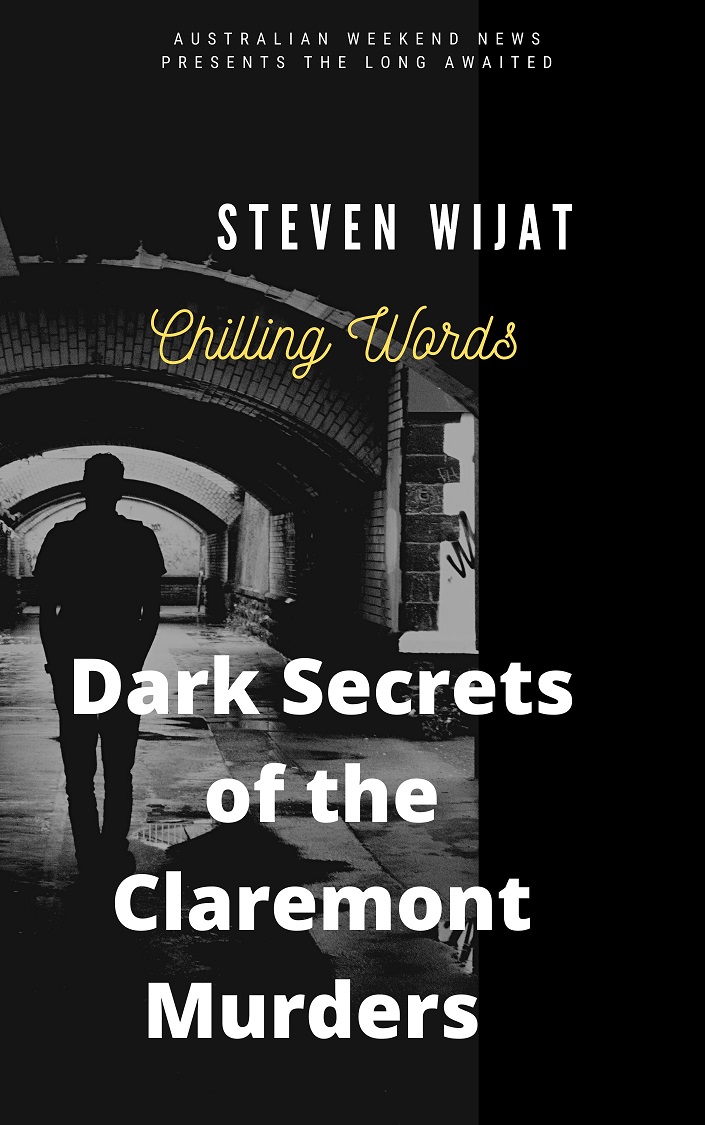
Claremont Serial Killings
Chilling Words
Dark Secrets of the Claremont Murders
by Steven Wijat
ChillingWords -
Dark Side Of The Claremont Serial Killings
An INLtv.co.uk Book And Film
Promotional Video
Chilling Words
Dark Side Of The Claremont Serial Killings
INLtv.co.uk
Book And Film 24 Minutes Promotional Video
Liam Bartlett's question to Chris Edwards the Western Australian Police Commissioner:
"Here's the bottom line in this case, Bradley Robert Edwards from 1988 for 10 years that we know was attacking, abducting, raping, assaulting and murdering for 10 years around Perth and he was never even a suspect on the WA Police Radar out of the around 18,000 suspects that you had admitted where listed as suspects in the 1995 Karrakatta Abduction and Rape of a young17 year old girl, until the yes 2016... Mr Dawson ... how was that possible? ... and how is that anywhere neat good police work?" ... Liam Bartlett
Bradley Robert Edwards (called Young Bradley by his Telecom boss after his 1990 sexually motivated assault at Hollywood Hospital) has admitted sexually assaulting the girl in 1995 in the Karrakatta Cemetery. He threw her to the ground and straddled her while he tied her wrists together behind
Chris Dawson returned to the newly named Western Australia Police Force as Commissioner, after three years as the Chief Executive Officer of the Australian Criminal Intelligence Commission.
Liam Bartlett @LiamBartlett9 60 Minutes Reporter Liam Bartlett returned to Channel Nine Perth in 2015 as anchor of the weekend news bulletins and to present special reports
The book and film
Chilling Words - Dark Side of the Claremont Murders
is making public for the first time the facts, information and legal and factual analysis that neither the Western Australian Police, The Western Australian Government, the Director of Public Prosecutions for Western Australia, Supreme Court Justice Stephen Hall, or even the Defense Team for Bradley Robert Edwards wanted to hear about, read or know about before or during the long six months trial of Bradley Robert Edwards.
Chilling Words Dark Side Of The Claremont Serial Killings
INLtv.co.uk Book And Film
One Hour Promotional Video
The book making public for the first time the facts, information and legal and factual analysis that neither the Western Australian Police, The Western Australian Government, the Director of Public Prosecutions for Western Australia, Supreme Court Justice Stephen Hall, or even the Defense Team for Bradley Robert Edwards wanted to hear about, read or know about before or during the long six months trial of Bradley Robert Edwards.
Anyone interested in obtaining a collectors edition of the book,
"Chilling Words - Dark Secrets of the Claremont Murders
please send an email to:
This email address is being protected from spambots. You need JavaScript enabled to view it.
Claremont Killer Sentence Today
West Australian 23rd December 2000
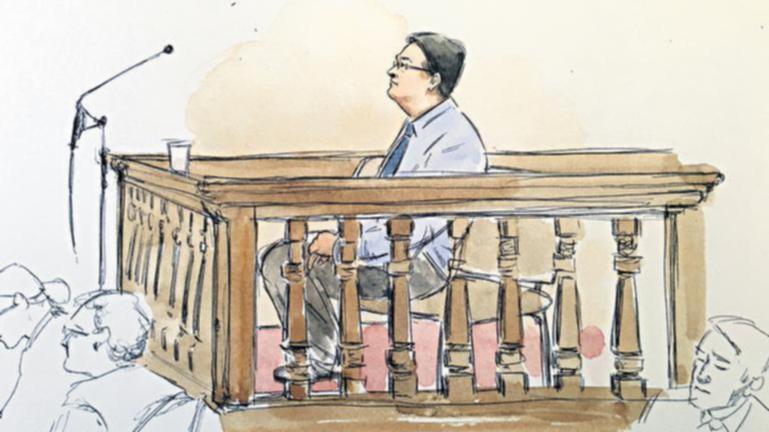

Bradley Robert Edwards

Sarah Spiers, Ciara Glennon and Jane Rimmer
'A trial like no other': Bradley Robert Edwards found guilty of two Claremont murders, not guilty of third
A West Australian Supreme Court Justice Stephen Hall as found Bradley Robert Edwards guilty of murdering two women in Perth in the 1990s but not guilty of a third killing.
Jenny Rimmer, mother of Jane Rimmer
arrives at the Supreme Court of Western Australia in Perth
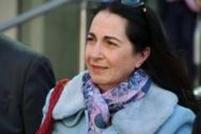
Carmel Barbagello SC Deputy WA Director Public Prosecutions who acted For
Chris Dawson WA Commissioner of Police in the Bradley Robert Edwards Murder Trial
Carmel Barbagello SC was the Deputy WA Director of Public Prosecutions who was Acting For Chris Dawson the WA Commissioner of Police in the prosecution of Bradley Robert Edwards who was charged for the murders of Sarah Spiers, Jane Rimmer and Ciara Glennon.
Ms Barbagallo has 25 years’ legal experience commencing in general practice in regional Queensland before taking on a variety of roles in the ACT, Victoria and Western Australia.

Sarah Spiers, Ciara Glennon and Jane Rimmer

Bradley Robert Edwards Photo One

Bradley Robert Edwards Photo Two
Bradley Robert Edwards was on trial for the murders of Sarah Speirs, Jane Rimmer and Ciara Glennon, and was found guilty by Justice Stephen Hall for the murders of Jane Rimmer and Ciara Glennon, but found not guilty of Sarah Speirs

Bradley Robert Edwards and
Carmel Barbagello SC Deputy Director Public Prosecutions For Western Australia
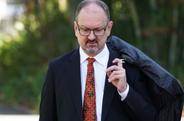
Paul Yovich SC Head Legal Counsel Representing Bradley Robert Edwards At His Murder Trial
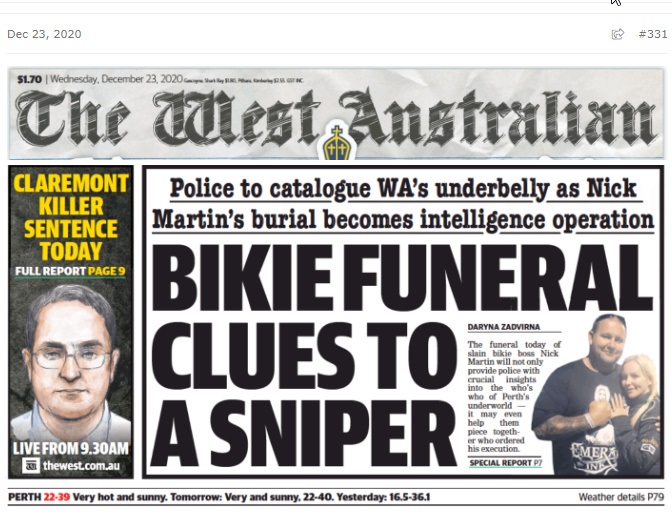
Claremont Killer Sentence Today
West Australian 23rd December 2000
Bradley Robert Edwards Has Been Found Guilty Of
Killing Jane Rimmer And Ciara Glennon
But Not Sarah Spiers
Claremont Serial Killings
Chilling Words
Dark Secrets of the Claremont Murders
by Steven Wijat
Anyone interested in obtaining a collectors edition of the book,
"Chilling Words - Dark Secrets of the Claremont Murders
please send an email to:
This email address is being protected from spambots. You need JavaScript enabled to view it.
Bradley Robert Edwards Jailed For 40 Years
For Two Murder Convictions of
Jane Rimmer and Ciara Glennon
Bradley Robert Edwards found guilty of
2 Counts Of Murder 7 NEWS Part Introduction
Serial Killer Loose In Perth
Robert Falconer WA Commissioner Of Police
Claremont Serial Killer Verdict Live
Bradley Robert Edwards
Found Guilty On 2 Counts Of Murder 7NEWS Part 1

Chilling Words -
Dark Secrets of the Claremont Murders
http://www.wikipediaexposed.org/csk_trial_closingarguments.html
Catching The Claremont Killer Why No Body Means
No Justice For One Family Australian Story
Chris Dawson the WA Police Commissioner Annoinces
Bradley Robert Edwards Is Charged
For The Alledged Murder Of Sarah Spiers
Claremont Serial Killer History Video Part One
An Australian media, publishing, and film company and its film investor partners are in the process of setting up an old historical hotel in Australia, that closely resembles the Claremont Hotel, where Sarah Speirs, Jane Rimmer and Ciara Glennon drank before they were abducted and murdered in 1996 and 1997, as a prop for the new film being made based on a new explosive book called "Chilling Words -Dark Secrets of the Claremont Murders" setting out the undisclosed sensational facts and background of the famous Claremont Serial Killings, which names well connected and powerful people as being involved in the planning and executing what is known worldwide as The Claremont Serial Killings.

Chilling Words
Dark Secrets of the Claremont Murders
by Steven Wijat
Anyone interested in obtaining a collectors edition of the book,
"Chilling Words - Dark Secrets of the Claremont Murders
please send an email to:
This email address is being protected from spambots. You need JavaScript enabled to view it.
Claremont Serial Killer Attacking Girls Partying In Clarement History Part 3
The book and film "Chilling Words -Dark Secrets of the Claremont Murders" , raises serious questions as to whether the Western Australian Police, the Public Prosecutions for Western Australia, the Government of Western Australia, Supreme Court Justice Stephen Hall, and the Australian mainstream media are right in their belief and public claim that Bradley Robert Edwards was the sole person involved in the planning and executing of what is publicly named the Claremont Serial Killings (CSK), which is the public name given by the Western Australian Media, to the abductions and murders of Sarah Spiers, Jane Rimmer and Irish/Australia lawyer Ciara Glennon in 1996 and 1997
The book also shows reasons why the Claremont Serial Killings should also include the abductions and murders of Julie Leanne Cutler, Kerry Turner and Sarah Anne McMahon.

Chilling Words
Dark Secrets of the Claremont Murders
by Steven Wijat
Anyone interested in obtaining a collectors edition of the book,
"Chilling Words - Dark Secrets of the Claremont Murders
please send an email to:
This email address is being protected from spambots. You need JavaScript enabled to view it.
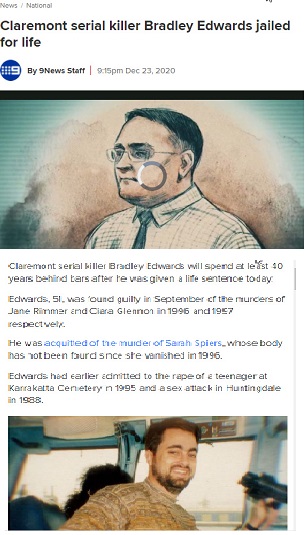
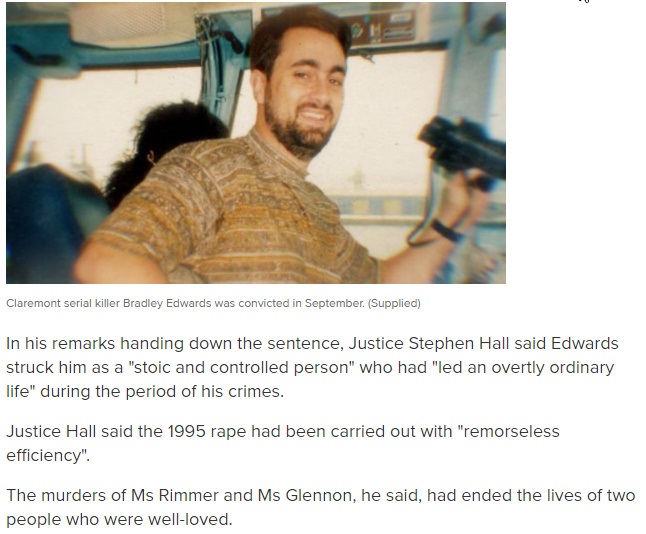
Calremont Serial KIller Jailed For Life
23rd December 2020P
Claremont Serial Killer Verdict Live
Bradley Robert Edwards
Found Guilty On 2 Counts Of Murder 7NEWS
Claremont Trial Cost $13 milllion and every bit is in storage
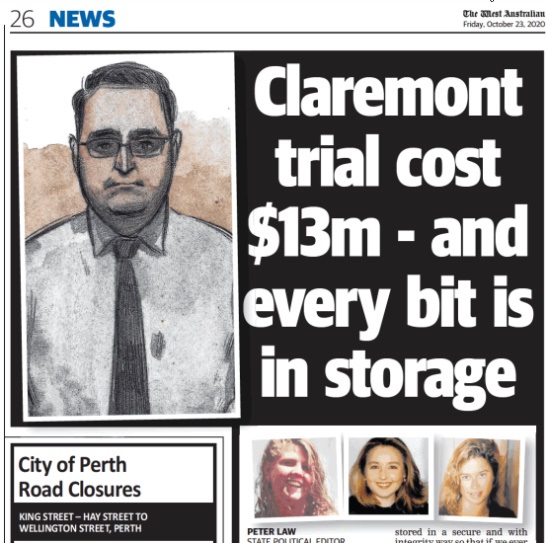
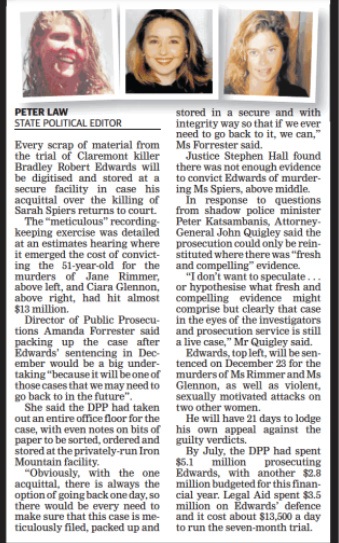

Claremont Trial Cost $13 Million And Every Bit Is In Storage
West Australian 23d December 2022
Every scrap of material from the trial of Claremont killer Bradley Robert Edwards will be digitised and stored at a secure facikiity in case his aquittal over the killing of Sarah Spiers returns to court.
The "meticulous" recording keeping exercise was detailed ay an estimates hearing where it emerged the cost of convicting the 51-year-old for the murders of Jane Rimmer (above left) and Ciara Glennon (above right), had hit £13 million dollars.
The Director of Public Prosecutions Amanda Foster said packing up the case after Edwards' sentencing in December, 2000 would be a big undertaking "because it will be one of those cases that we may need to go back to in the future.
She said the DPP had taken out an entire office floor for the case, with even notes on bits of paper to be sorted, ordered and stored at the privately run Iron Mountain facility.
"Obviously, with the one aquittal, there is always the option of going back one day, so there would be every need to make sure that this case is meticulously filed, packed up and stored in a secure and with integrity way sot at if we ever need to go back to it, we can", Ms Forrester said.
Justice Stephen Hall found there was not enough evidence to convict Edwards of murdering Ms Spiers, above middle.
In response to questions from shadow police minister Peter Katsambanis , Attorney General John Quigley said the prosecution could only be reinstituted where there was "fresh and compeling" evidence.
"I don't want to speculate... or hypothesise what fresh evidence and compelling evidence might comprise of, but clearly that case in the eyes of the investigators and prosecution service is still a lve case," Mr Quigley said.
Edwards (top left) will be sentenced on December 23rd, 2000 for the murder of Ms Rimer and Ms Glennon, as well as violent sexually motivated attacked on two other women.
He will have 21 days to lodge his own appeal against the guilty virdicts.
By July, the DPP had spent $5.1 million prosecuting Edwards, with another $2,8 mllion budgeted for this financial year. Legal Aid spent $3.5 million on Edwards's defence and it cost about $13,500 a day to run the seven month trial.
Alison Fan Fans Her Sons Name
Subiaco Post 12th December 2000
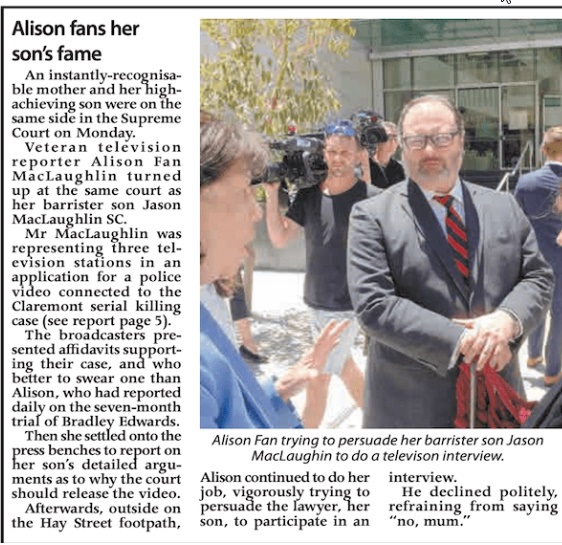
Alison Fan tying to persuade her barrister son Jason McLaughlin
to do a television interview
An instantly recognizable mother and her highly achieving son were on the same side in the Supreme Court of Western Australia on Monday. Veteran television reporter Alison Fan McLaughlin turned up at the same court as her barrister son Mr Jason McLaughlin SC.
Mr Jason McLaughlin SC. was representing Three television stations in an application for a police video connected to the Claremont Se4rial Killing Case. The broadcasters presented affidavits supporting their case, and who better to swear one than Alison Fan Mc#Laughlin, who reported daily on the seven month trial of Bradley Edwards. Then she settled onto the press benched to report on her son's detailed arguments as to why the court should release the video.
Afterwards, outside the Hay Street, Footpath, Alison Fan continued to do her job, vigorously trying to persuade the lawyer, her son, to participate in an interview. Her declined politely, refraining from saying no mum",
Part 1 of 10
Claremont Serial Killer Verdict Live
Bradley Robert Edwards
Found Guilty On 2 Counts Of Murder 7NEWS
Part 2 of 10
Claremont Serial Killer Verdict Live
Bradley Robert Edwards
Found Guilty On 2 Counts Of Murder 7NEWS
Part 3 of 10
Claremont Serial Killer Verdict Live
Bradley Robert Edwards
Found Guilty On 2 Counts Of Murder 7NEWS
Part 4 of 10
Claremont Serial Killer Verdict Live
Bradley Robert Edwards
Found Guilty On 2 Counts Of Murder 7NEWS
Part 5 of 10
Claremont Serial Killer Verdict Live
Bradley Robert Edwards
Found Guilty On 2 Counts Of Murder 7NEWS
Part 6 of 10
Claremont Serial Killer Verdict Live
Bradley Robert Edwards
Found Guilty On 2 Counts Of Murder 7NEWS
Part 7 of 10
Claremont Serial Killer Verdict Live
Bradley Robert Edwards
Found Guilty On 2 Counts Of Murder 7NEWS
Part 8 of 10
Claremont Serial Killer Verdict Live
Bradley Robert Edwards
Found Guilty On 2 Counts Of Murder 7NEWS
Part 9of 10
Claremont Serial Killer Verdict Live
Bradley Robert Edwards
Found Guilty On 2 Counts Of Murder 7NEWS
Part 10 of 10
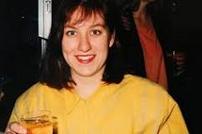

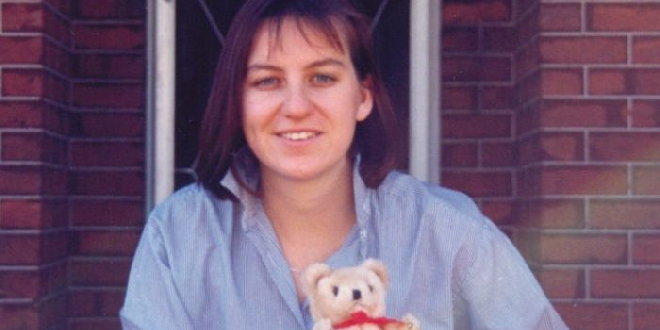
Julie Leanne Cutler disappeared in 1988
Cold Case Homicide detectives have begun searching sand dunes at Cottesloe beach today as part of their ongoing investigation into the 1988 disappearance of Julie Cutler. The search follows a fresh appeal for information that was made in June – which marked 30 years since she was last seen leaving a staff function at the Parmelia Hilton Hotel in Perth on June 20, 1988
JULIE LEANNE CUTLER – PERTH WA – $250,000 Reward. Case date: Monday 20 June 1988 Location: MILL STREET PERTH
22 years of age at the time of disappearance. Light skinned. Dark brown shoulder-length hair. 160cm (5 feet 3 inches) tall. Medium build. Green eyes.
Last seen wearing a black evening dress with a high collar and gold buttons on the shoulder and black patent leather shoes. Carrying a leather shoulder bag and a white plastic bag believed to contain her hotel workers uniform
.BACKGROUND:
Julie Leanne Cutler was 22 years of age at the time of her disappearance. She enjoyed reading, writing and socialising with friends. She was working casually at the Parmelia Hilton Hotel in Perth as a room attendant and lived in Fremantle with a female flatmate.
CASE DETAILS:
On the evening of Sunday 19 June 1988, Miss Cutler was working at the Parmelia Hilton Hotel, 14 Mill Street, Perth. After finishing her shift, she attended a staff awards night at Julianna’s nightclub, which was part of the Parmelia Hilton. It is believed that around 180 people attended this function until around 12.30am on Monday 20 June 1988.
Miss Cutler and a female co-worker left the work function, walking together to the staff parking area of the hotel. Miss Cutler was seen by her co-worker bending into the open front passenger side door of her car. Miss Cutler’s car was a two-tone grey and black Fiat sedan registered number 6CW749. It is believed that Miss Cutler then re-entered the hotel and function until it finished, before returning to her vehicle and driving away. The Fiat sedan was last seen turning left from Mill Street onto Mounts Bay Road.
Miss Cutler did not arrive home in Fremantle that night and did not attend work at the hotel for her rostered shift later that day.
In the morning of Tuesday 21 June 1988 Miss Cutler’s flatmate reported her missing.
VEHICLE LOCATED:
About 11.45am on Wednesday 22 June 1988, Miss Cutler’s car was located several meters off the shoreline at Cottesloe Beach by a swimmer. The car was about halfway between the Surf Life Saving Club and the groyne. At this time the car was upside down, half-buried in the sand. The rear seat of the vehicle was located separately to the vehicle.
The person or persons responsible for Miss Cutler’s disappearance have not yet been identified.
If you have any information about the disappearance of Julie Leanne Cutler, please contact Crime Stoppers on 1800 333 000 or make an online report below. Please remember that you can remain anonymous if you wish and rewards are offered.
Cold Case Homicide detectives have begun searching sand dunes at Cottesloe beach today as part of their ongoing investigation into the 1988 disappearance of Julie Cutler. The search follows a fresh appeal for information that was made in June – which marked 30 years since she was last seen leaving a staff function at the Parmelia Hilton Hotel in Perth on June 20, 1988.
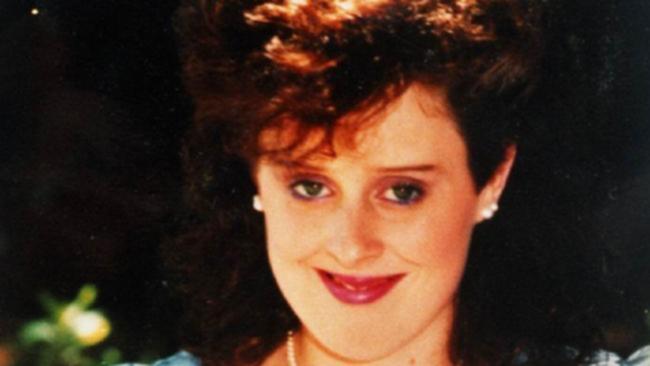 Kerry Turner disappeaed in 1991
Kerry Turner disappeaed in 1991
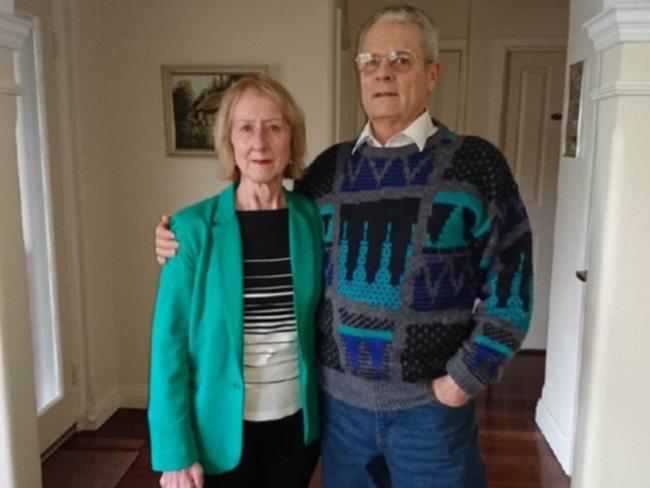
Sue and John Turner, the parents of Kerry Turner, have made a renewed plea for information 25 years after her unexplained murder.
Father of murdered Perth woman Kerry Turner renews plea for information to solve 1991 death
“She never came home, you can imagine how that was for us,” Mr Turner told ABC radio.
“We think about this every single day, in some way or another we remember our daughter, so it’s always fresh.
“We miss Kerry so much, her tragic loss has left a gaping hole in our family of missing grandchildren, possibly even great-grandchildren.”
He described his daughter, a childcare worker, as a lovely, bubbly and happy person with no fear.
Acting Superintendent Peter Branchi said police believed there were people who knew what happened to Kerry and urged them to call Crime Stoppers.
“Over time allegiances change, people change and circumstances change, and someone who may have felt intimidated or uncomfortable sharing information with police back in the 1990s may now be in a position to do so,” he said.
THE father of murdered teenager Kerry Turner says the pain is as raw today as when it happened in the winter of 1991.
This week marks 25 years since his 18-year-old daughter went missing in Perth and was found four weeks later in bushland 40km away.
Her killer was never caught and the murder remains unsolved.
John Turner has appealed for anyone with information about his daughter’s death to come forward along with WA police, who say people who were not willing to do so at the time might be now.
Mr Turner said he believed there were people out there who saw or knew something.
Kerry had been out nightclubbing on the night of June 29 with her best friend, but the pair had become separated.
She was seen hitchhiking before a taxi dropped her off at a cafe in suburban Victoria Park.
From there witnesses saw her get into a dark blue car with distinctive wheels, possibly a Datsun 260z, after 5am.
That was the last time she was seen and Mr Turner and his wife and Kerry’s mother Sue endured a torturous four weeks until walkers discovered her body near the Canning dam.
Kerry Turner as 18-year-old Perth teenager Kerry Turner, on her way home from a night out in the city of Perth, accepted a lift from a driver in Victoria Park and was never seen alive again.
Kerry Turner disappeared on June 30, 1991, after accepting a lift in Victoria Park. The death of Kerry was the second tragedy for John and his wife Sue, who immigrated to Perth from the UK in 1970 for a better life. In 1985, their son, Jamie, 18, died after being injected with drugs by a man who was later convicted of his manslaughter.

Sarah Anne McMahon
The last publicly known sighting of Sarah Anne McMahon was in Claremont when she left Hugall and Hoile, her Claremont workplace, at about 5.20pm on November 8, 2000, after talking on the phone .... Sarah's last known phone call was with Donald Morey, aka Matusevich ..... it is believed that Sarah has arranged to meet with Donald Morey, aka Matusevich in the Midland area
https://www.
Ian Stanford, 54, was a passenger in a car driven by Lisa Mighall when he saw a woman getting into a white vehicle, which he said may have been a ute with a canopy.
"It looked to be in reasonable condition ... no writing on the side of it," he said.
"As we went past the back of the car, the tailgate was up and there was a person holding it up ... I couldn't understand why there was a girl or a lady ... and she was in the process of getting in the back.
"I remember saying to Lisa, 'after what's gone on in this area, I can't understand why someone would do that'."
Mr Stanford said he never saw the woman's face but she was wearing a white top and black skirt.
Anyone interested in obtaining a collectors edition of the book, "Chilling Words (Dark Side of the Claremont Murders)" please send an email to:
This email address is being protected from spambots. You need JavaScript enabled to view it.
Claremont Serial Killer Bombshell
Horseman Reports Clue To Possible Sarah Spiers Site - Liam Bartlett Feb 11th 2022
Where Is Sarah Spiers - New Evidence In Sarah's Possible Whereabouts
The Claremont Serial Killer Bradley Edwards
May Have Been Responsible For Other Serious Crimes
The Woman Who Escaped The Bogey Man Claremont Serial Killer
Bradley Robert Edwards 60 Minutes Australia

Bradley Robert Edwards was back in court today as his arrest was re-lived in evidence from WA police
Why did the police when contacted in 1997 about a possible sighting of person at the possible sight of the burying of the body of Sarah Speirs fully investigate such sighting?
Part of the answers to this question can bbe found in the new book
“Claremont’s Darkest Secrets . (They Have Blood On Their Hands) ...” .....
“The Truth Behind The Claremont Serial Killings Must Be Exposed..
In loving memory and dedication to the victims of the Claremont Serial Killers
.”Notice of Book Launch"
For enquires for a pre-publishing release of a Collectors Edition of the book
“Claremont’s Darkest Secrets . (They Have Blood On Their Hands) ”
“The Truth Behind The Claremont Serial Killings Must Be Exposed..
Email: Book Publishing Manager at
This email address is being protected from spambots. You need JavaScript enabled to view it.
http://www.wikipediaexposed.org/csk_trial_closingarguments.html
 and Detective Sergeant Joe Marrapodi, who is standing behind Radley Edwards on the day of his arrest..jpg)
Detective Inspector Leo Ricciardi (Glasses) and Detective Sergeant Joe Marrapodi, who is standing behind Radley Edwards on the day of his arrest
Cops coy on visit to ‘Spiers site’
POST Newspapers 19 Feb 2022 By BRET CHRISTIAN
Police will not say whether they have visited the Hills site nominated by a horse trainer as the possible disposal site for a body.
The trainer told the POST he recognised an image of Claremont killer Bradley Edwards as the man carrying a shovel he saw emerging from bush at dawn the morning Sarah Spiers vanished ( Horseman reports clue to Spiers site, POST, February 12).
The POST asked police a series of questions based on the man’s account, including whether they had excavated the spot he nominated. He has told the POST the location. This week a police spokesman replied: “The information was first reported to police in October 1997 and has been investigated.
“The further reports received have also been investigated appropriately.
“There is no evidence to validate the information, and the whereabouts of Sarah remain unknown.
“WA Police will never give up in their efforts to find Sarah.”
The trainer contacted the POST because after reporting to police what he had seen, he had no further contact from them.
He said he had not been asked to show police the direction from which he saw the man with the shovel walking.
Sarah Spiers vanished early on the morning after Australia Day 1966, after visiting Club Bayview in Claremont.
Bradley Robert Edwards is serving a minimum 38-year sentence for the murders of Jane Rimmer and Ciara Glennon, who also disappeared after partying in Claremont in 1996 and 1997.
Edwards was acquitted of the murder of Sarah Spiers.
Because her body has not been found, police were unable to make a forensic link between her and her killer.
The trainer said that after his report, he and another person became spooked as detectives concentrated their investigations on three other local men, including Cottesloe public servant Lance Williams, who in 2009 turned out to have nothing to do with the three murders.
He said he had become alarmed and feared that he would be treated as a suspect.
But recently he read POST editor Bret Christian’s book on the murders, Stalking Claremont, and believed he recognised the image of the man he had seen.

Carmel Barbagello SC Deputy WA Director Public Prosecutions who acted For
Chris Dawson WA Commissioner of Police in the Bradley Robert Edwards Murder Trial
Carmel Barbagello SC was the Deputy WA Director of Public Prosecutions who was Acting For Chris Dawson the WA Commissioner of Police in the prosecution of Bradley Robert Edwards who was charged for the murders of Sarah Spiers, Jane Rimmer and Ciara Glennon.
Ms Barbagallo has 25 years’ legal experience commencing in general practice in regional Queensland before taking on a variety of roles in the ACT, Victoria and Western Australia.

Sarah Spiers, Ciara Glennon and Jane Rimmer

Bradley Robert Edwards Photo One

Bradley Robert Edwards Photo Two
Bradley Robert Edwards was on trial for the murders of Sarah Speirs, Jane Rimmer and Ciara Glennon, and was found guilty by Justice Stephen Hall for the murders of Jane Rimmer and Ciara Glennon, but found not guilty of Sarah Speirs

Bradley Robert Edwards and
Carmel Barbagello SC Deputy Director Public Prosecutions For Western Australia

Paul Yovich SC Head Legal Counsel Representing Bradley Robert Edwards At His Murder Trial
aul Yovich SC, the head ;legal counsel representing Bradley Robert Edwards at his murder trial
Paul Yovich's defense is simple.... "my client Bradley Robert Edwards is not guilty of thew murder of Sarah Spiers, Jane Rimmer and Ciara Glennon .,, because he did not commit these murders ....

Lauriee Webb Former Senior Path West Scientist Sacked For Not Following Proper DNA Research Protocols In Criminal Cases
Lauriee Webb, for senior Scientist at PathWest, who was sacked for not following the proper protocols in DNA Research in Criminal Cases, who had been named as a possible suspect in tampering with the DNA and Ciara Glennon and the DNA of Bradley Edwards.There is an allegation is court documents that Laurie Webb may have been involved in deliberately adding Bradley Robert Edwards' DNA to Ciara Glennon's DNA, using a deliberately left container of Ciara Glennon's DNA untested for many years so that the DNA of the person to be selected to be framed for the Claremont Serial Killings could at the right time be added to Ciara Glennon's DNA
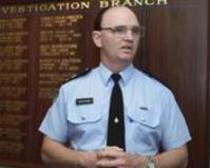
David John Caporn Former Macro Task Force Head and
Former Assistant WA Police Commissioner,
who had to quickly resign form the WA Police after being accused by the High Court of Australia for conspiring with other WA Police and WA Senior DPP Prosecutor Kenneth Paul Bates for conspiracy to pervert the course of justice in Andrew Mallard's murder trial, ad was also accused of interfering in the charging of well known WA Footballer Barry Cable who was accused by a women of sexual assault against her when she was a child
David John Caporn has been accused in court documents of deliberately investigating the wrong people for the Claremont Serial Killings ,
to help protect powerful police and a powerful well-connected wealthy Perth Businessman who Sarah Anne McMahon named in a sworn statement as being involved with the Claremont Serial Killings.
David John Caporm quickly resigned from the Western Australian Police Service after being named in the High Court of Australia for being involved with other police and former senior DPP Prosecutor, Kenneth Bates for conspiring ro pervert the course of justice for presenting false and misleading information and evidence at Andrew Mallard's trial at which he was wrongly convicted for the murder of Pamela Lawrence and as a result spent 12 years in prison for a murder her did no commit. Andrew Mallard, was killed on 18th April, 2019 by a hit and run driveri on Sunset Boulevard, in Los Angeles California, United States while he was using his $3 million compensation payout to pay a top Sydney barrister for issue a private prosecution for conspiracy to pervert the course of justice against David John Caporn, Kenneth Bates and others for conspiracy to pervert the course odf justice.
Justice Hall went on to deliver guilty verdicts for the murders of the other two women, Jane Rimmer and Ciara Glennon. For those families, at least, a part of their nightmare was over.
"We were all very, very relieved and happy that we got the result we wanted," says Jenny Rimmer. "And it just seemed unreal that finally he'd been convicted."
Mr Spiers, too, found comfort in those verdicts.
"That gave us great peace of mind that he was going to be put away and taken out of the community," he said. "He'll never bother anyone again."
Edwards hid in plain sight for more than 20 years before his arrest in 2016
When Don Spiers sat in the packed courtroom in the WA Supreme Court in late September he had everything at stake. He had waited 25 years for some kind of justice for his daughter, Sarah.
Twenty-five years of unremitting agony. For a third of his life he had been grieving his child, not knowing what had happened to her.
Sarah Spiers had been the first of three young women to go missing in the wealthy Perth suburb of Claremont where a suspected serial killer had preyed in the mid-1990s. She was only 18. Hers was the only body not found and the lack of physical evidence meant her murder would be the hardest to prove.
Mr Spiers' suffering has been immense. "It never leaves you," he tells Australian Story 16 years after he was first interviewed by the program.
"No matter how hard you try, you can't ignore it. There's probably not an hour of any day that passes that I don't think of Sarah. It was our lovely daughter and we'll never forget that — never, never, ever."
But after the biggest police investigation in WA history, Don Spiers would finally be in the same room as the man accused of brutally killing his little girl.
Bradley Robert Edwards was on trial for the murder of Sarah in January 1996, Jane Rimmer a few months later and Ciara Glennon, a 27-year-old lawyer, in early 1997. All of them had been making their way home from clubs in Claremont when they disappeared.
Three sets of parents became connected by the unthinkable, a profound connection that would sustain them through the trial and beyond the verdict.
Jenny Rimmer still goes to the cemetery and talks to her daughter, Jane.
"She was a lovely little girl. Very bubbly. She was just a delight to be around."
Her daughter was 23 and working in childcare when she had her life brutally taken.
Ms Rimmer's sadness is for the life she never got to live. "I miss her. I just think to myself, she would be married with probably three or four children. She loved children. It's just so sad that she never got to do that."
The arrest of Edwards in December 2016 came as a complete shock to her.
"I never thought they'd find anybody," Ms Rimmer said.
"It had been going on for so long and I just thought it was a lost cause, really."
For Mr Spiers, it was not wholly unexpected.
"I've always had a gut feeling that he would eventually be arrested because forensics were getting better and the police were very determined to get an end result."
“Claremont’s Darkest Secrets . (They Have Blood On Their Hands) ...” .....
“The Truth Behind The Claremont Serial Killings Must Be Exposed..
In loving memory and dedication to the victims of the Claremont Serial Killers
.”Notice of Book Launch"
“Claremont’s Darkest Secrets . (They Have Blood On Their Hands) ...” .....
The untold truth of the Claremont Serial Killings must be told ..: so that the victims of the Claremont Serial Killers can have their final say .., the truth will shock the public of Western Australia, who may rather believe what the Deputy Director of Public Prosecutions for Western Australia... Prosecutor Carmel Barbagallo SC ..,, with a $100 million dollar budget paid by the people of Western Australia to prosecute Bradley Robert Edwards at a six month trial with over 200 witnesses and over 20,000 exhibits ... has desperately tried to convince His Honour Justice Stephen Hall ... “ ... that confessed rapist .... Telecom Technician Bradley Robert Edwards is the lone Claremont Serial Killer ..., “ .... the readers of “Claremont’s Darkest Secrets (They Have Blood On Their Handsome )” .... will be given the opportunity to make up their own minds .,,24-Year Investigation - The Untold Story Of The Claremont Serial Murders - Ciara Glennon, a much loved Irish-Australian Lawyer, and much loved Australian girls Julie Cutler... Sarah Spiers... Jane Rimmer and Sarah Anne McMahon ... all abducted near Claremont and the City of Perth .. which .is described by author Debi Marshal in her book about the Claremont Serial Killings as ‘"The Devil’s Garden’ ... believed to all have all been abducted and brutally murdered right under the noses of the Western Australian Police ... with those involved in the Claremont Serial Killers hiding in plain site of the Western Australian Public ... but their criminal activities well known by the Western Australian Police long before the abduction and murder of Irish-Australian Lawyer Ciara Glennon and the abduction and murder of young innocent vulnerable Australian girls Sarah Spiers, Jane Rimmer and Sarah Anne McMahon ...
For enquires for a pre-publishing release of a Collectors Edition of the book
“Claremont’s Darkest Secrets . (They Have Blood On Their Hands) ”
“The Truth Behind The Claremont Serial Killings Must Be Exposed..
Email: Book Publishing Manager at
This email address is being protected from spambots. You need JavaScript enabled to view it.
http://www.wikipediaexposed.org/csk_trial_closingarguments.html
Jane Rimmer Last Seen Hitching by 4 Uni Students 12.30 am 9th June 1996 Hitching on Stirling Highway towards the City of Perth
This fact was deliberately withheld by the Police, the State of WA, the DPP for WA and the Prosecutor Carmel Barbagallo SC from the Bradley Robert Edwards/Claremont Serial Killer Trial .. The Question Is Why Was This Important Material Fact Withheld?
Another important question to be answered is why the Western Australian Police and Telecom/Telstra did not flag up the name of Bradley Robert Edwards in the 1995 and 1996 when the WA Police requested from Telecom/Telstra to supply a list of drivers with access to Telstra vans and cars in 1995 and 1996 ,,,,,, it is strangely claimed at the trial by the WA Police and Prosecution .... that the name of Bradley Robert Edwards was not flagged up in 1995/1996/1997/1998 as a suspect in the 1995 Karakatta Rape and/or the disappearance of Sarah Spiers in January 1996, the abductions andor murders of Jane Rimmer in June 1996 and Ciara Glennon in March 1997 ...being the only Telecom/Telstra employee with access to Telecom.Telstra vehicles who had a serious criminal record of a serious sexual assault conviction for the 1990 Hollywood assault, where the female victim stated she believed at the time that Bradley Robert Edwards was going to kill her.... how and why was the name of Bradley Robert Edwards left off the Telecom/Telstra List of Drivers that had access to Telecom/Telstra vans and cars in 1995, 1996 and 1997, 1998 ..... one answer could that the WA Police had already knew that BR Edwards had committed the Karrakatta Rape in 1995 but needed to add his DNA to one of the CSK Victim's DNA and take it the UK for Low Copy Type DNA Testing to help frame BR Edwards for all the Claremont Serial Killings ... if the WA Police and the DPP for WA are right about BR Edwards being the sole Claremont Serial Killer ... then if they had done their job properly in 1995 after the Karrakatta Rape happened the police would have and should have immediately flagged up the name of Bradley Robert Edwards in 1995 by searching the police files for people with similar criminal sexual assault convictions in a nearby area . then the Sarah Spiers, Jane Rimmer and Ciara Glennon would still be alive...... Hollywood is close to Claremont and Karrakatta and the 1990 Hollywood assault on a female is a very similar crime to the 1995 Karratta Rape with BR Edwards only having recently finished his tw year probation period... ... thus it is impossible for name of Bradley Robert Edwards would not have been on their radar and flagged up as a suspect in the 1995 Karrakatta Rape immediately the 1995 Karrakatta Rape was reported....
Please take the time to read “Claremont’s Darkest Secrets . (They Have Blood On Their Hands) ...”
“The Truth Behind The Claremont Serial Killings Must Be Exposed.... for some answers....
and discover further questions to be answered about the Claremont Serial Killings
Frank Silas and two other men who called themselves CARK (Citizens for Apprehension of the Real Killer)
called a press conference because they weren't happy happy with Macro's inaction.
Claremont serial killings trial podcast: ‘Another Woman's DNA’ Kate RyanPerthNow- February 6, 2020
https://www.perthnow.com.au/news/claremont-serial-killings/claremont-serial-killings-trial-podcast-another-womans-dna-ng-b881455419z
"We know the Claremont killer" The Post Newspaper 2001/09/01
Mr Silas said this week he believed " the scratches had been made by a person, because each scratch was about 5mm wide and they were spaced like human fingers."
Mr Silas said that after Ms Glennon's body had been found, he had phoned Fremantle Police and Crime Stoppers to tell of his suspicions. He said detectives had not interviewed the man until eight months after Mr Silas' first call.
Available at the State Library - http://encore.slwa.wa.gov.au/iii/encore/record/C__Rb2028647?lang=eng
https://www.dropbox.com/sh/9ntidqi1...dl=0&preview=We+know+the+Claremont+killer.pdf
...The three men said that on the Tuesday after Ms Glennon disappeared their fellow worker, a casual employee, had arrived at work very defensive about the four distinct scratches on his face, which they said appeared to have been made by fingernails. He had kept to himself at the back of the factory and attempted to hide his face behind his hair...
...Mr Silas said the casual employee had tried to conceal scratches on his face when the two came face to face in the factory kitchen on the morning of the Tuesday after Ms Glennon's disappearance. The man had been evasive about how he had received the scratches, finally saying his dogs had jumped up on him.
Mr Silas said this week he believed the scratches had been made by a person, because each scratch was about 5mm wide and they were spaced like human fingers.
Frank Silas and two other men who called themselves
CARK (Citizens for Apprehension of the Real Killer)
called a press conference because they weren't happy happy with Macro's inaction.
Australia Claremont Serial Killer, 1996 - 1997, Perth, Western Australia - #10 P.5
http://www.websleuths.com/forums/showthread.php?325918-Australia-Claremont-Serial-Killer-1996-1997-Perth-Western-Australia-10/page5
If BRE was to plead not guilty to the 1997 murder of CG, ...
With Frank Silas and friends (if still alive) to be called as witnesses.
Claremont Serial Killer, 1996 - 1997, Perth, Western Australia webslueths.com P.60
The apparent lack of media referral to anything to do with Frank Silas, the CARK or this 2001 article, raises questions about the potential for a massive cover up of something about this case, and will do nothing to allay any suspicions or rumours of BRE potentially being falsely accused of some of the charges that have already been laid.
He said he had called another supervisor, now aged 31, who sneaked a look at the scratches. Mr Silas said the casual employee man had frequently claimed to be famous, and some days after Ms Glennon was found the man had said he was "more famous than Christopher Skase". Mr Silas had been puzzled until he realised the newspaper that morning had the Claremont murders on the front page and a report about Christopher Skase on page three.
Mr Silas said that after Ms Glennon's body had been found, he had phoned Fremantle Police and Crime Stoppers to tell of his suspicions. He said detectives had not interviewed the man until eight months after Mr Silas' first call.
Mr Silas said police had later told him the man had said he could not remember where he had been that night in March. Mr Silas said police had said they'd checked security alarm records and they believed there had been no nightshift at the factory that night. This week, Mr Silas disputed this, saying he had proof. The casual employee's girlfriend had later got a job in the same factory. She once remarked that a factory process felt the same as stabbing someone.
Her boyfriend had been an excellent worker but had been sacked for assaulting a female worker at the factory. He had later been re-employed. Mr Silas had become frustrated at what he saw as lack of police action, and turned detective himself. He'd made excuses to call at the former casual employee's home and to check out his van. He said that once he had seen what appeared to be a pattern of blood spots on the inside roof of the van; they had gone brown after being treated with an organic cleaner. The man had once unbolted the front seat of the van and said he was looking for an earring. His girlfriend did not wear earrings. She began wearing a claddagh ring, but did not know what it was. Ciara Glennon had been wearing a claddagh brooch when she disappeared. It has not been found.
Mr Silas said the casual employee had been a craftsman who had the skills to convert a brooch to a ring...
...Mr Silas said he believed the couple was still together, and worked as a team. The man had phoned the factory three times recently trying to get a reference for jobs, once from Victoria, once from Queensland and most recently from Darwin...
"We know the Claremont killer" The Post Newspaper 2001/09/01
Available at the State Library - http://encore.slwa.wa.gov.au/iii/encore/record/C__Rb2028647?lang=eng
"We know the Claremont killer" -Christian, Bret. Index Entries | 2001.
Summary: Police say at least 12 people have been named repeatedly as suspects in the Claremont serial murders inquiry. Silas is convinced he knows the identity of the killer.
Subjects: Serial murder -- Western Australia -- Claremont. _ Silas, Frank. Found In Subiaco post, 1 Sept. 2001, p.1,55, (Battye newspaper), .b16826188.
Frank Silas and two other men who called themselves
CARK (Citizens for Apprehension of the Real Killer)
called a press conference because they weren't happy happy with Macro's inaction.
Australia Claremont Serial Killer, 1996 - 1997, Perth, Western Australia - #10 P.5
http://www.websleuths.com/forums/showthread.php?325918-Australia-Claremont-Serial-Killer-1996-1997-Perth-Western-Australia-10/page5
If BRE was to plead not guilty to the 1997 murder of CG, ...
With Frank Silas and friends (if still alive) to be called as witnesses.
Claremont Serial Killer, 1996 - 1997, Perth, Western Australia webslueths.com P.60
The apparent lack of media referral to anything to do with Frank Silas, the CARK or this 2001 article, raises questions about the potential for a massive cover up of something about this case, and will do nothing to allay any suspicions or rumours of BRE potentially being falsely accused of some of the charges that have already been laid.
http://www.websleuths.com/forums/showthread.php?222868-Claremont-Serial-Killer-1996-1997-Perth-Western-Australia/page60
With Frank Silas and friends (if still alive) to be called as witnesses.
With the ex-workmate (+female partner) that Frank Silas reported to police, and that the Police reportedly, and belatedly investigated, to be drawn into the case.
THE serial killer behind the 1994 Claremont murders may be leaving clues ... Page 192 - Apparently aman named Frank Silas and two other men who called themselves
CARK (Citizens forApprehension of the Real Killer) called a press conference because they weren't happy happy with Macro's inaction.
I. A news article in the Subiaco Post Newspaper ( a copy can be located on the http://www.wikipediaexposed.org/csk_p.9.html website) l shortly after the disappearance of Ciara Glennon stated that a police officer at the Claremont Police Station stated that the police were looking for a man and a woman who they believed were involved in the abduction of Ciara Glennon ad that there was a police car circling the streets around the part of Claremont where Ciara Glennon had last been seen on Stirling Highway by a number of witnesses All these police officers should be placed on the witness stand as to their memory of things that went on at the material time and be asked why they believed that a man and a woman were suspected of being involved with the disappearance of Giara Glennon,
http://www.wikipediaexposed.org/csk_p.9.html
J.The Taxi Driver Steven Ross who picked up Sarah Spiers, and a man and woman who seemed to know each other at the Conti Hotel in Claremont the night before Sarah Spiers disappeared. Steven Ross dropped the female in Nedlands and then drove Sarah Spiers and the man to the Windsor Hotel in South Perth, where the man virtually pushed Sarah Spiers to get out of the taxi with the an at the Windsor Hotel.
http://www.wikipediaexposed.org/csk_p.9.html
K. Noel Coward made public statement about a part time taxi driver living in Fremanlte who was well known as Taxi Tony who Noel Coward stated was involved with a girl named Michelle is helping to abduct Sarah Spiers, Jane Rimmer and Ciara Glennon and he also stated these girls were abducted to be used in the making iof snuff movies to be sold overseas with a man flying out of Australia with the snuff movie that was made the morning after each girl disappeared wit. He also said that Michelle left Western Australia and went to the Eastern States for a a month after each girl disappeared. The police and the prosecution have never been interest in this information, which seems to tie in wit the fact that as shown at the trial in evidence that the neck bone of Jane Rimmer was cut out ,,, which would be be expected to happen is a man had abducted Jane Rimmer for sexual gratification ,,,, it would not make any sense ,,, it would make more sense that the neck bone was cut out of Jane Rimmer to be sold as a body part and/or the making of a snuff movie..
L. It is noted that Andrew Mallard stated that he sometimes stayed and smoked Grass with a girl named Michelle who lived in a flat in Monument Street, Mosman Park who was quite heavy into drugs, This may be important because Michelle was the name of the girl Noel Coward mentioned and she lived near the phone box in Mosman Park where witnessed said they heard screams coming from a car where two doors slammed and then the car drove off. It is also noted that there must have been two people in that car besides the girl that screamed because two doors slammed just before the car drove off ….
M. Girls who used to drink and party at the Continental Hotel and Club Bay View in Claremont have stated it was common knowledge among girls who drunk and partied at the Continental Hotel and Club Bay View in Claremont that police from the Cottesloe Police Station used to pick up girls drunk and/or high on drugs such as crystal meth between around 11 pm and 3 am in the morning as what was meant to be a public service to make sure the girls arrived home safely. However, sometimes a girl by herself were driven by police to parties at the Cottesloe Police Station and sometimes were driven by the police to parties at the Mosman Park home of a powerful well connected wealthy business person. It was at one of these parties that Julie Cutler died. To help destroy any DNA and fingerprint evidence the Fiat Car belonging to Julie Cutler was placed in the water at Cottesloe Beach, and Julie Cutler’s body disposed off in the Swan River…by police under orders of a powerful well connected wealthy Perth business person
N. Unfortunately, once the police at the Cottesloe Police Station were involved with the death and disposal of the body of Julie Cutler, even though it was not the intention of the police who were there at the party were Julie Cutler died, for her to die, the powerful well connected wealthy Perth business person had complete control of the police involved, to the point he could make them do and act in anyway he demanded for fear of them being exposed and blamed for the death and disposal of Julie Cutter…. Basically this helped this powerful well connected wealthy Perth business person obtain his “Green Light” status which meant that he was protected by the Western Australian Police from being investigated and/or arrested and/or charges for any criminal offences he was involved with regardless how serious they were. There examples on public record that show this powerful well-connected wealthy Perth business person committed serious criminal offences that were easily provable however he was never arrested for such criminal behaviour.
O. Because of the large volume complexity of the evidence that has been at the trial and the length of the trial of the State of Western Australia v Bradley Robert Edwards being 184 of 2018 in the Supreme Court of Western Australia, is would virtually impossible for another justice to hear this application and it would be much more practical for His Honour Justice Hall to hear this application.
(P) More further and better particulars will be provided at a full hearing of this application.
29. Case(s) referred to:
Australasian Meat Industry Employees Union Mudginberri Station Pty Ltd (1986) 161 CLR 98
Channel Ltd v EGM Cosmetics (1981) ESR 471
Chilstern District Council v Keen (1985} 1 WLR 619
Harmsworth v Harnsworth (1987) 1 WLR 1676
Lynwood v Andrews and Moore (1988) 58 LT 615
Re Elson (1824) 3 LJ Old Series KB 75; 107 English Reports 855
The Queen v Pearse, unreported: FCt SCt of WA, Library No 920206, 30th March 1992
Carew-Reid and Ors v Carew Corporation C 5 of 1993,
unreported: FCt SCt of WA, Library No 930354
Goldsmith v Sandilands [2002] HCA 31; (2002) 76 ALJR 1024 HCP v The State of Western Australia [2019] WASCA 38
R v Soma [2003] HCA 13; (2003) 212 CLR 299
The State of Western Australia v McBride [2015] WASC 275
LFG v The State of Western Australia [2015] WASCA 88
R v Glennon [1992] HCA 16; (1992) 173 CLR 592
Steele v The State of Western Australia [2018] WASCA 133
TVM v The State of Western Australia [2007] WASC 299; (2007) 180 A Crim R 183
Dated 18th June 2020
Signed: Wikipedia Exposed Media Group (WEMO)
Marathon Claremont serial killings trial ends after seven months of hearings By Andrea Mayes
Key points:
The trial of Bradley Robert Edwards has run for seven months
The defence has raised doubts about fibre and DNA evidence
The prosecution says the combined evidence is overwhelming
The long-running Claremont serial killings trial is at an end, after defence counsel Paul Yovich SC wrapped up his closing argument to the WA Supreme Court this afternoon about why Bradley Edwards should not be found guilty of the triple murders that shocked Perth more than two decades ago.
https://www.google.com/amp/s/amp.abc.net.au/article/12391428
Edwards, 51, has been on trial for the past seven months for the wilful murder of 18-year-old Sarah Spiers in January 1996, of 23-year-old Jane Rimmer in June the same year, and of Ms Glennon in March 1997.
Mr Yovich closed the defence's case by telling Justice Stephen Hall he could not be satisfied beyond reasonable doubt Edwards killed Ms Spiers, Ms Rimmer and Ms Glennon.
He said it was not even even possible to conclude that the same person killed all three women "despite fact that community has been acting on that basis for the past 20 years".
It was "perfectly plausible that different offenders are responsible," Mr Yovich said.
Mr Yovich said although there were certain commonalities between the deaths of Ms Rimmer and Ms Glennon, including the likely cause of their deaths from neck injuries and the concealment of their bodies by covering them in branches in bush locations, there was little to connect their deaths to that of Ms Spiers — whose body has never been found.
In relation to Ms Glennon and Ms Rimmer, Mr Yovich said "we accept those features in combination mean it would be open for Your Honour to find that the same person could be responsible beyond reasonable doubt".
He said Edwards's known movements on the night of Ms Spiers's death and the following day also militated against finding he killed the young receptionist.
"The accused's opportunity … to offend against Sarah Spiers is so tight as to make it highly unlikely that he was the offender," he said.
Acknowledging the importance of the case, Mr Yovich said there was no doubt the community and the families of the victims "yearn for closure".
"But a conviction or convictions founded on inadequate evidence and not by powerful satisfaction beyond reasonable doubt on any of the counts will not constitute proper closure," he said.
The marathon trial has been running since November and has recorded more than 10,000 pages of transcript encompassing more than 200 witnesses.
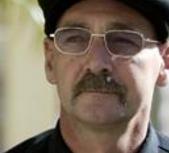
Donald Victor Morey aka Matusevich has been publicly named as a suspect as being responsible for the Murder of Sarah Anne McMahon

Sarah Anne McMahon, who disappeared 8th November, 2000,
The Coronor hearing the Sarah Anne McMahon Inquest has ruled the Sarah Anne McMahon died from homicide. Donald Victor Morey aka Matusevich has been named by the police and a witness as being involved in the murder of Sarah Anne McMahon
Sarah Anne McMahon, who disappeared 8th November, 2000, the girl who was murdered because she knew too much about the powerful people in Perth, Western Australia who were involved and behind the Claremont Serial Killings. Sarah Anne McMahon, made a sworn statement about what she knew about who was involved in the Claremont Serial Killings. The sworn statement made by Sarah Anne McMahon has constantly been ignored by the WA Police, the WA Director of Public of Public Prosecutions and the WA Government and was also ignored Bradley Robert Edwards' defence Team. Over $100 million dollars have been spend by the Western Australian Government on behalf of the people of Western Australia, with the support of the Western Australian Freemason controlled mainstream media, to convince the families of the victims, the Western Australian and Australian Pubic and the world that Bradley Robert Edwards was to sole person involved in, and that planned and carried out the the abductions of Sarah Spiers, Jane Rimmer and Ciara Glennon, the media have publicly named the Claremont Serial Killings.
There is clear evidence and information set out in the new book being published named “Claremont’s Darkest Secrets . (They Have Blood On Their Hands) ...” showing that the WA Police could have easily arrested Bradley Robert Edwards by the end of 1995 for the attack at a young 17 year-old girl at Perth's Karrakatta Cemetery on February 11, 1995 and the Huniitngton attack in 1988, and not wait nearly 20 years later to arrest Bradley Robert Edwards...
The book “Claremont’s Darkest Secrets . (They Have Blood On Their Hands) ...” helps explain why the Western Australian Police waited from 1996 to 2014 to arrest Bradley Robert Edwards for the attack at a young 17 year-old girl at Perth's Karrakatta Cemetery on February 11, 1995 and the Huntington attack in 1988. If Bradley Robert Edwards is the true sole Claremont Serial Killer, stalking the streets of Claremont and Cottesloe in the 1980's and
1990's, then his reign of terror who have come to an abrupt end if Bradley Robert Edwards was properly dealt with by the WA Police, the WA Courts, the WA DPP, his employers Telstra (formerly Telecom, who it is understood Bradley Edwards' father also worked for as well) and the WA Freemason controlled Mainstream Media for his 1990 attack on a female at the Hollywood Hospital in 1990, and/or quickly interviewed and arrested in 1995 for the attack at a young 17 year-old girl at Perth's Karrakatta Cemetery on February 11, 1995 and the Huntington attack in 1988.
Sarah Anne McMahon, stated in her sworn statement made before she was murdered, that Julie Cutler was one of the first Claremont Serial Murders Victims.

Julie Cutler Disappeared in 1988 and was Named In Sarah Anne McMahon's Sworn Statement Being One Of The Claremont Serial Murders Victims.
Donald Victor Morey aka Matusevich has been publicly named as a suspect as being responsible for the Murder of Sarah Anne McMahon, but for some reason the Western Australian Police Service seem not to have tried too hard or put much serious resources and effort into investigating Donald Victor Morey’s involvement if the abduction and murder of Anne Sarah McMahon.
Donald Victor Morey aka Matusevich confessed to Mrs Allen the wife of his boss Mr Gareth Allen, who owned the house in Marangaroo, were Donald Victor Morey aka Matusevich lived at the material time that he had killed many times before and would be happy to kill her husband if she wished, after ease dropping a big argument between his boss and his wife.
Mrs Allen stated that Donald Victor Morey aka Matusevich stated her “ … I was in the S.A.S that’s were I was taught to kill people. I have killed before…”
Donald Victor Morey aka Matusevich had access to a mechanical workshop at his boss Mr Gareth Evan’s trucking yard, where he worked maintaining his boss’s trucks that travelled between Western Australia and the Eastern States and between Perth and northern towns in Western Australia.
As it seems clear on the evidence at Sarah Anne McMahon’s Inquest and from other evidence and information that Donald Victor Morey aka Matusevich was selling Sarah Anne McMahon $10,000 lots of amphetamine, he would have had the cash for access to new vehicles and was able to cut and shut rebuild vehicles that he could set up himself and build a fake taxi and thus did not have to purchase a taxi plate.
In the 1970’s Donald Victor Morey aka Matusevich was convicted by murdering a prisoner in his cell with an axe, however his murder conviction was set aside by the High Court of Australia on a technicality and a retrial was ordered. However, before the conviction as set aside the only witness to seeing Donald Victor Morey aka Matusevich murdering the other prisoner was also found dead in his cell. Thus with no living witnesses Donald Victor Morey aka Matusevich was found not guilty at his retrial after making an unsworn statement in the dock stating it was the other prisoner in the cell that committed the murder and it was not him.
Shortly after Sarah Anne McMahon disappeared on 8th November, 2000, Mrs Allen, the wife of Mr Gareth Allen, the boss of Donald Victor Morey aka Matusevich rang the police to say that while cleaning the room of Donald Victor Morey aka Matusevich, she found a bag, that she knew was regularly with Donald Victor Morey aka Matusevich.
This bag that Mrs Allen saw looked like a bag a serial killer would have which had, which she claimed contained two grey rolls of dirty grey used gaffer tape, four lengths of ropes with knots in the ends about two feel long, two knives, one was Mr Allen’s pocket knife, two large rubber bands, one condom in a packet , two pornographic magazines with photos of deal females, between five and seven key rings and a map.
Mrs Allen stated that the porn magazines contained pictures contained pictures of men with blood on their genitals and women tied up who appeared to be dead,
At the material time the Police were actively looking for a person who could be the sort of person to be involved in the CSK, and thus should have come straight over in a 30 minute’s drive from the CIB office in Perth, to come and collect this bag belonging to Donald Victor Morey aka Matusevich.
However, it took the police 4 days to come an collect this bag belonging to Donald Victor Morey aka Matusevich.
This gave plenty of time of the female partner of Donald Victor Morey aka Matusevich to come and collect this bag belonging to Donald Victor Morey aka Matusevich. Any reasonable person would think it was extremely strange why the police took 4 days to come an collect this bag belonging to Donald Victor Morey aka Matusevich, and could easily come to the conclusion that corrupt police rang the female partner of Donald Victor Morey aka Matusevich to warn her to come and collect the bag before the police get there to collect the bag because Donald Victor Morey aka Matusevich was in a corrupt involvement with corrupt police and had murdered Sarah Anne McMahon to stop her from coming forward as a witness to stay the a well off well connected business person and certain police were involved in The Clarement Serial Killings.
Evidence came out at Sarah Anne McMahon’s Inquest that Sarah Anne McMahon was selling and distributing $10,000 parcels of illegal drugs such as Chrystal Meth. Thus, it seems clear that Donald Victor Morey aka Matusevich was involved with a much larger illegal drug dealer handing out $10,000 lots of Chrystal Meth to people for sale.
There in ample evidence that certain Western Australian Police have for a long time been involved with the supply and distribution of illegal drugs in Western Australia. For example in the 1980’s when well known illegal drug deal Paul Mausari was on trial for selling heroin, he yelled form the Dock and pointed at the Drug Squad Detectives sitting in the front row of the District Court stating to the judge … “ ,,,, your honour a admit that my business is selling heroine …but the police officers sitting in the front row of the court who arrested my on these drug selling charges were my business partners for many years …. So what I can not understand is why are these police officers also charged with me for supplying and selling heroine?” …. Of course as the police are protected from arrest and prosecution the police were never charged and simply went on an find another person to sell the illegal drugs for them ,,,,, Of course the well-controlled Western Australian Media who attended this court case never reported what Paul Maussari said to the judge about the police being his business partners selling illegal drugs over many years.
Claremont serial killings trial hears graphic details of Karrakatta Cemetery rape by Bradley Edwards
to die.
Key points:
- The girl was attacked by Bradley Edwards a year before Sarah Spiers went missing
- Edwards pleaded guilty to the rape charges before his murder trial began
- The graphic testimony caused a woman to flee the courtroom while sobbing
A 17-year-old girl who was abducted and raped in a Perth cemetery by alleged Claremont serial killer Bradley Edwards said she was so terrified during her ordeal, she thought she was going to die.
A number of statements from the woman, whose name has been suppressed, were read by state prosecutor Carmel Barbagallo SC at Edwards's WA Supreme Court trial on Monday.
Warning: This story contains graphic content that may be upsetting
Edwards, 50, a former Telstra technician, is charged with the wilful murders of Sarah Spiers, 18, Jane Rimmer, 23, and Ciara Glennon, 27.
He was originally charged with a total of eight offences, including three charges relating to the rape of the teenager as well as an attack on another teenager in Huntingdale in 1988.
But he pleaded guilty just weeks before the trial began to all but the murder charges.
Grabbed while walking home
The statements were given to police in the days, weeks and years after the attack at Perth's Karrakatta Cemetery on February 11, 1995 — a year before Ms Spiers was allegedly abducted and murdered.
The woman said she was walking home from Club Bay View, the same venue Ms Spiers last visited before she vanished, when she was grabbed from behind by a man.
Ms Spiers was last seen shortly after leaving the same Claremont nightclub on January 27, 1996.
The 17-year-old described walking along Gugeri Street and then along a path that ran through nearby Rowe Park when the man suddenly seized her.
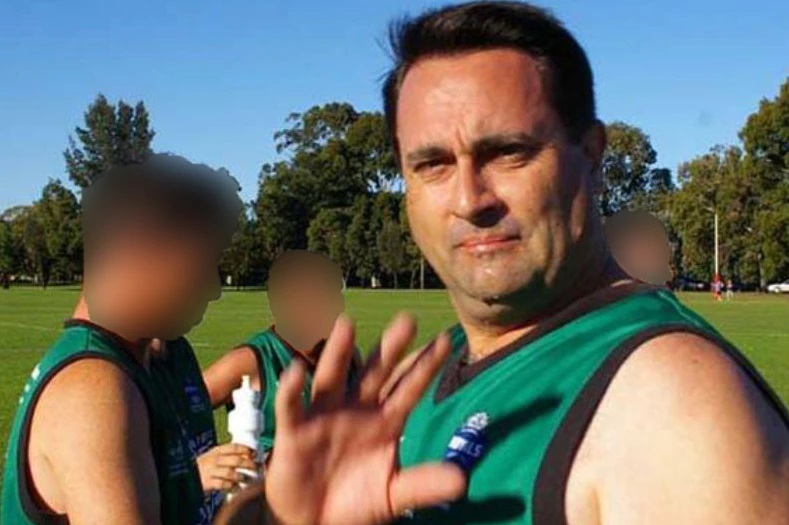
He threw her to the ground and straddled her while he tied her wrists together behind her back, before stuffing what felt like a thick woollen sock into her mouth.
She began crying but closed her eyes, believing it was better if her attacker thought she had not seen him.
"I initially tried to struggle, but given the size of the man who assaulted me I thought it would be safer not to," she said.
She described her attacker as heavily built, about 185 centimetres tall and Caucasian, with straight, brown hair.
"I kept my eyes closed a lot of the time because I was very frightened," she said.
"I thought I was going to die."
'I can't believe this is happening'
Edwards then carried her to a nearby vehicle, likely a van, tying her ankles together and putting a cotton bag over her head before driving for about 25-30 minutes and stopping the vehicle.
He carried her out then dropped her on the ground, and began dragging her through the dirt.

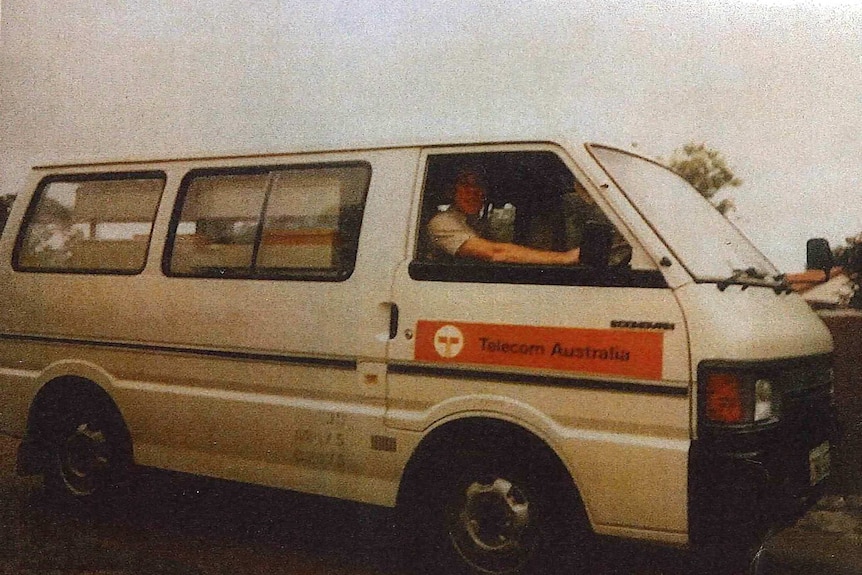
Too scared to scream or cry out, the woman gave a graphic description of being raped by Edwards.
"I just know that I felt a lot of pain," she said.
"I didn't scream, I just froze basically."
A woman watching proceedings in the public gallery of the courtroom got up and fled from the room sobbing as the statement was being read out.
A desperate search for help
The woman said she kept her eyes closed even after Edwards pulled the bag off her head, because she wanted him to think she was unconscious.
After the attack, he picked the teenager up and threw her into some bushes about 8 metres away.
Edwards finally left in his vehicle and when the girl opened her eyes and got up, she realised she was in the cemetery.

Walking out onto the road, she could see houses nearby but did not approach them, because she "didn't trust a stranger".
Naked from the waist down and with her hands still bound, she tried desperately to cover herself with the denim vest she had been wearing as she ran along the street searching for help.
She came to a nursing home and found a phone on the outside of the building, before managing to knock the receiver off its cradle and dial numbers with her chin.
When a woman eventually picked up and asked where she was, she was unable to say, so she ran off towards the road.
The phone call a parent dreads
Edwards's victim eventually found a public phone box, calling the operator and making a reverse-charge call to her parents' home, where her father answered.
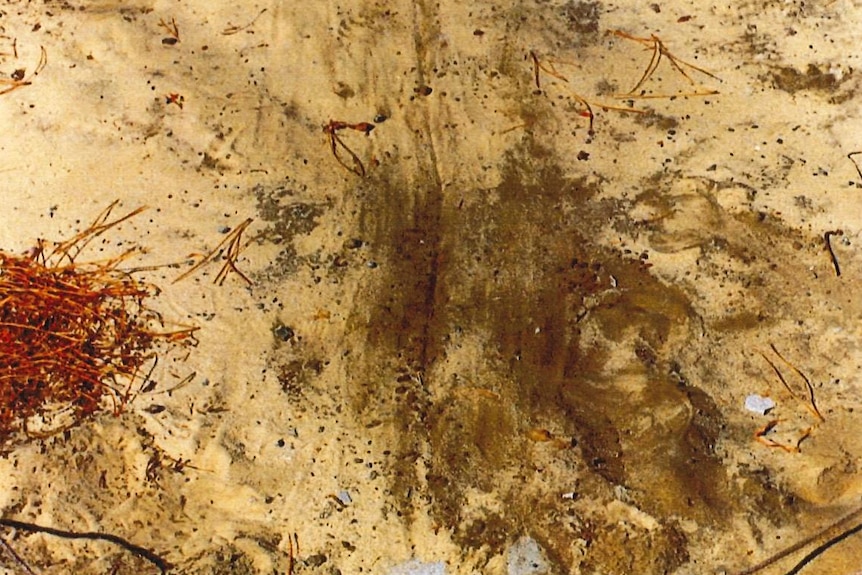
In a witness statement tendered to the court, he said his daughter was "crying hysterically" as she begged him to pick her up.
"She said, 'I was taken by a man and tied up and left at the cemetery'," he said.
The teenager then ran to nearby Hollywood Hospital and banged on a glass door, where she could see a nurse.
"I was hysterical," she said.
The nurse let her in and helped her after she told her she had been raped, and her parents and the police arrived soon after.
She asked him to remove the cord that was still partially tied around her with a very tight knot, which he untied "with difficulty".
The cord was about 4 metres long and he said he thought it was a "Telecom extension cord".
The trial, before Justice Stephen Hall, continues.

Tom Percy QC a respected senior Perth Criminal Defence Barrister in Western Australia.
Tom Percy QC a respected senior Perth Criminal Defence Barrister in Western Australia, … stated on the Claremont Serial Killer Trial Podcast produced by the West Australian Newspaper that .. in the 19th June 2020 episode … in words of the following effect …. “ I would not like to be convicted of the murder of Sarah Spiers, Jane Rimmer and/or Ciara Glennon on the alleged evidence as presented at the Bradley Robert Edwards/Claremont Serial Killer Trial …” .. in other words even with a mountain of missing material information, evidence, witness statements and witnesses …. That have been deliberately and/or accidently not been presented at the trial ….. if he was the justice hearing the case ….
Is his opinion we would be very likely to bring down a not guilty verdict on the three murder charges against the accused Bradley Robert Edwards ….
Longman Warning
11.11.2010
Common Law Warnings in Criminal Trials
In Longman,[54] a complaint was made more than 20 years after the alleged offence. In general terms, the caserequires that the jury be warned that, because of the passage of a number of years, it would be ‘dangerous to convict’ on the complainant’s evidence alone unless the jury is satisfied of its truth and accuracy, having scrutinised the complainant’s evidence with great care.[55] The rationale for the warning is that a significant delay puts the accused at a forensic disadvantage because he or she has lost the ‘means of testing the complainant’s allegations which would have been open to him [or her] had there been no delay’
7.08.2010
18.70
While it is beyond the scope of the present Inquiry to conduct a comprehensive analysis of common law warnings, submissions and consultations indicate that there are two aspects of the common law which are causing significant concern and warrant attention in the present Inquiry.
The first related to the Longman and Crofts warnings given in criminal trials which are commonly given where there has been a delay in the reporting of a sexual assault. The Longman Rule Warning requires the trial judge to warn the jury in relation to:
First, the forensic disadvantage to the accused arising from delay,
And
Secondly the effects of delay on reliability of the witness’ evidence.
While given most frequently in sexual assault cases, the Longman warning maybe required In any case where there has been a delay in report in reporting or prosecuting an offence. (139).
The Crofts warning which is given only in sexual cases, requires the trial judge, requires the trial judge to warn the jury that delay in complaint can be used to impugn the credibility of the complaint.
18.71
The second related area of concern is that the common law has effectively established rules of practice requiring warnings to be given in relation to particular categories of evidence. (140) As a result, there has been a significant increase in the extent of appellate intervention into this area.
Uniform Evidence Acts approach
28.39 In ALRC Report 102, the ALRC, NSWLRC and Victorian Law Reform Commission (VLRC) identified two options for reform to address the concerns raised in relation to the Longman warning: to legislate to abolish the warning in its entirety; or to legislate to clarify, modify or limit its operation.[66]
28.40 Ultimately the ALRC and the VLRC, but not the NSWLRC, recommended that:
the uniform Evidence Acts be amended to provide that where a request is made by a party, and the court is satisfied that the party has suffered significant forensic disadvantage as a result of delay, an appropriate warning may be given.
The provision should make it clear that the mere passage of time does not necessarily establish forensic disadvantage and that a judge may refuse to give a warning if there are good reasons for doing so.
No particular form of words need to be used in giving the warning. However, in warning the jury, the judge should not suggest that it is ‘dangerous to convict’ because of any demonstrated forensic disadvantage.[67]
28.41 The recommendation was subsequently enacted as s 165B of the Evidence Act 1995 (Cth), Evidence Act 1995 (NSW) and Evidence Act 2008 (Vic).[68]
28.42 In its 2008 consultation paper on jury directions, the VLRC considered whether s 165B of the uniform Evidence Acts provided a satisfactory approach to warning the jury in relation to the forensic disadvantage because of delay and whether such a warning continues to be necessary, or the matter ought to be left to counsel to address.[69] The VLRC concluded that s 165B of the Evidence Act 2008 (Vic) appropriately deals with Longman warnings:
Section 165B provides that the judge must be satisfied that the accused has suffered forensic disadvantage because of the delay before giving the jury a warning. The judge is probably better placed than the jury to make this threshold assessment. If the judge makes this determination he or she must inform the jury of the nature of the disadvantage and instruct them to take it into account when considering their verdict.
Section 165B of the Evidence Act is activated by a request from counsel for a warning. The trial judge has a discretionary power to refuse to give a warning which has been requested when satisfied that ‘there are good reasons for not doing so’. This approach is consistent with our recommendations concerning all directions other than those which are mandatory.[70]
28.43 Cossins has identified a number of weaknesses and limitations in the operation of s 165B of the uniform Evidence Acts.[71] The limitations arise, in her view, because:
· s 165B ‘does not affect any other power of the judge to give any warning to, or to inform, the jury’,[72] meaning that trial judges are still able to give a Longman warning; and
· the Longman warning is mandatory in nature but s 165B warnings are dependent on an application by ‘a party’[73] or ‘the defendant’.[74]
28.44 The National Child Sexual Assault Reform Committee has identified a number of issues that may arise in practice as a result.[75] These are that:
· a trial judge could give both Longman and s 165B warnings;[76]
· a trial judge may be persuaded to give the Longman warning instead of a s 165Bwarning to ‘appeal-proof’ the case;[77] and
· in the federal and Victorian jurisdictions, the defendant must request the s 165B warning before it can be given, and it is doubtful whether the defence would make such a request if the more advantageous Longman warning can be given in the alternative.
Options for reform
28.45 The Queensland Law Reform Commission (QLRC) and the TLRI have recommended the enactment of legislative provisions to override the Longman warning in terms which are broadly consistent with the uniform Evidence Acts approach.[78]
28.46 South Australia has pursued an alternative reform option by enacting s 34CB of the Evidence Act 1929 (SA). Section 34CB of the Evidence Act 1929 (SA) was enacted with the clear intention of abolishing the Longman warning.[79] Arguably, however, the drafting abolishes the trial judge’s obligation to give the Longman warning, without limiting the power to give the warning, providing that a ‘rule of law or practice obliging a judge in a trial of a charge of an offence to give a warning of a kind known as a Longman warning is abolished’.[80]
28.47 As a result, s 34CB of the Evidence Act 1929 (SA) differs from s 165B of the uniform Evidence Acts to the extent that it abolishes the trial judge’s obligation to give the Longman warning.
28.48 In practice, however, the provisions may differ little in the extent to which they regulate the trial judge’s general power to give a Longman warning.[81] The key distinction which emerges between s 165B of the uniform Evidence Acts and the South Australian provision is that under the uniform Evidence Acts, a judge may be obliged to give a Longman warning—irrespective of whether a s 165B warning is requested—whereas a judge under s 34CB of the Evidence Act 1929 (SA) is not obliged to give a Longman warning.
28.49 Other points of difference between s 165B of the uniform Evidence Acts and s 34CB of the Evidence Act 1929 (SA) include that:
· a judge under the uniform Evidence Acts is not obliged to give a s 165B direction to the jury if it is not requested,[82] whereas a judge under s 34CB of the Evidence Act 1929 (SA) must do so if the court is of the opinion ‘that the period of time that has elapsed between the alleged offending and the trial has resulted in a significant forensic disadvantage to the defendant’;[83]
· a judge under the uniform Evidence Acts provision has a discretion to refuse to give a warning relating to delay where the defendant is forensically disadvantaged if there are good reasons for doing so,[84] whereas no such discretion is available to a judge under s 34CB of the Evidence Act 1929 (SA); and
· the uniform Evidence Acts do not explicitly require that the direction given must be specific to the circumstances of the particular case, whereas the South Australian provision makes this explicit.[85]
28.50 The National Child Sexual Assault Reform Committee has proposed an alternative provision to address the inadequacies of s 165B of the uniform Evidence Acts.[86] The Committee proposed that the defendant should have to show—on the balance of probabilities—‘actual forensic disadvantage’ before the court is required to give a s 165B warning.[87] The Committee also proposes that s 165B should prescribe the exact wording of the warning and prohibit any other form of words being used.[88] Section 165B should, in the Committee’s view, require the trial judge to give reasons for not giving a warning and explicitly abrogate the court’s power to give a Longman warning.
Consultation Paper
28.51 In the Consultation Paper, the Commissions proposed that federal, state and territory legislation should provide that:
(a) if the court, on application by the defendant, is satisfied that the defendant has suffered a significant forensic disadvantage because of the consequences of delay, the court must inform the jury of the nature of the disadvantage and the need to take that disadvantage into account when considering the evidence;
(b) the judge need not comply with (a) if there are good reasons for not doing so; and
(c) no particular form of words needs to be used in giving the warning pursuant to (a), but in warning the jury, the judge should not suggest that it is ‘dangerous to convict’ because of any demonstrated forensic disadvantage.
28.52 The Commissions also asked what issues arise in practice pursuant to s 165B of the uniform Evidence Acts and whether the abrogation of the trial judge’s obligation and power to give a Longman warning under s 165B(5) is sufficiently explicit.
Submissions and consultations
28.53 Many stakeholders supported the Consultation Paper proposal.[89] Some members of the NSW legal profession observed that s 165B of the uniform Evidence Acts works satisfactorily in practice and does not lead to trial judges giving Longman warnings in addition to, or instead of, s 165B warnings.[90]
28.54 National Legal Aid noted that the Longman warning has a strong effect on trial outcomes and that, before the uniform Evidence Acts were enacted, research suggested that judicial misdirection in relation to the Longman warning was a common ground of criminal appeal and a common basis for successful criminal appeals in NSW.[91] Nonetheless, National Legal Aid considered that it is appropriate that Longman warnings be given where the defendant is at a forensic disadvantage in, for example, locating witnesses, testing or adducing evidence, where there has been substantial delay.[92]
28.55 Cossins did not support the Consultation Paper proposal, because it would not abolish the Longman warning or the power of trial judges to give the warning. In her view, there is ‘no reason to think that [the proposal] will change the practice of giving the warning, particularly since trial judges know that the failure to give a Longman warning is an obvious and common ground of appeal’.[93] Cossins questioned the grounds on which a trial judge can refuse to give a Longman warning, if requested by the defence, and argued that very clear words of abrogation need to be included to remove the power to give a common law warning.[94]
28.56 In Cossins’ view, the preferred reform would replace Longman with an alternative warning and specify a particular form of words to describe the disadvantages suffered by the defendant because of delay in complaint. This alternative warning should only be given where the defendant can show that he or she has suffered an actual forensic disadvantage as a result of a delay in complaint. It is necessary, Cossins argues, to restrict the form of words used by the trial judge.[95]
Commissions’ views
28.57 In the Commissions’ view, s 165B of the uniform Evidence Acts provides a satisfactory approach to the problems raised by the Longman warning. In forming this view, the Commissions recognise that delay in complaint is a typical feature of reporting sexual assault and that the mere passage of time ought not to ‘count against’ a complainant in sexual offence proceedings.
28.58 Provisions consistent with s 165B should be adopted by all jurisdictions because a jury could fail to appreciate that delay can cause forensic disadvantage to a defendant. Where (and only where) a significant forensic disadvantage is identified and has an evidentiary basis, the court ought to inform the jury of the nature of that disadvantage and the need to take it into account when considering the evidence.
28.59 The Commissions acknowledge that, in some cases, the existence of a very long delay may satisfy the court that the defendant has suffered a significant forensic disadvantage such as to require a s 165B warning, but also consider that the provision makes it clear that the mere passage of time does not necessarily establish forensic disadvantage.
Recommendation 28–3 State and territory legislation should provide, consistently with s 165B of the uniform Evidence Acts, that:
(a) if the court, on application by the defendant, is satisfied that the defendant has suffered a significant forensic disadvantage because of the consequences of delay, the court must inform the jury of the nature of the disadvantage and the need to take that disadvantage into account when considering the evidence;
(b) the judge need not comply with (a) if there are good reasons for not doing so; and
(c) no particular form of words needs to be used in giving the warning pursuant to (a), but in warning the jury, the judge should not suggest that it is ‘dangerous to convict’ because of any demonstrated forensic disadvantage.
[54] Longman v The Queen (1989) 168 CLR 79.
[55] Ibid, 91. See also 108–109.
[56] Ibid, 91.
[57] See, eg, Victorian Law Reform Commission, Jury Directions: Final Report (2009); Queensland Law Reform Commission, A Review of Jury Directions: Report, Report 66 (2009); New South Wales Law Reform Commission, Jury Directions, Consultation Paper 4 (2008); L Chapman, Review of South Australia Rape and Sexual Assault Law: Discussion Paper (2006), prepared for the Government of South Australia; Tasmania Law Reform Institute, Warnings in Sexual Offences Cases Relating to Delay in Complaint, Final Report 8 (2006); Australian Law Reform Commission, New South Wales Law Reform Commission and Victorian Law Reform Commission, Uniform Evidence Law, Report 102, NSWLRC Report 112, VLRC FR (2005); Criminal Justice Sexual Offences Taskforce (Attorney General’s Department (NSW)), Responding to Sexual Assault: The Way Forward (2005); Victorian Law Reform Commission, Sexual Offences: Final Report (2004); Legislative Council Standing Committee on Law and Justice—Parliament of New South Wales, Report on Child Sexual Assault Prosecutions, Report No 22 (2002). See also A Cossins, Time Out for Longman: Myths, Science and the Common Law (2010) Forthcoming in vol.34 (1) of Melbourne University Law Review.
[58] Dyers v The Queen (2002) 210 CLR 285; Doggett v The Queen (2001) 208 CLR 343; Robinson v The Queen (1999) 197 CLR 162; Crampton v The Queen (2000) 206 CLR 161.
[59] R v BWT (2002) 54 NSWLR 241, [14]–[15].
[60] Ibid, [34].
[61] Ibid,[95]. See, eg, R v Heuston (2003) 140 A Crim R 422.
[62] Criminal Justice Sexual Offences Taskforce (Attorney General’s Department (NSW)), Responding to Sexual Assault: The Way Forward (2005), 89–90. See also, New South Wales Law Reform Commission, Jury Directions, Consultation Paper 4 (2008), [7.49]–[7.54]; Tasmania Law Reform Institute, Warnings in Sexual Offences Cases Relating to Delay in Complaint, Final Report 8 (2006), [2.1.1]–[2.2.1], [2.3.1]–[2.3.2].
[63] A Cossins, Time Out for Longman: Myths, Science and the Common Law (2010) Forthcoming in vol.34 (1) of Melbourne University Law Review.
[64] Ibid.
[65] See Tasmania Law Reform Institute, Warnings in Sexual Offences Cases Relating to Delay in Complaint, Final Report 8 (2006), [2.1.22].
[66] Australian Law Reform Commission, New South Wales Law Reform Commission and Victorian Law Reform Commission, Uniform Evidence Law, Report 102, NSWLRC Report 112, VLRC FR (2005), [18.100]. See [18.101]–[18.102] for the principal arguments in support of each of these options.
[67] Ibid,[18.116]–[18.129], Rec 18–3. See also [18.130]–[18.146] for the NSWLRC’s views in relation to this recommendation.
[68] Differences between these provisions include that in s 165B(2) of the Commonwealth and Victorian Acts, application must be made by ‘the defendant’, while in s 165B(2) of the NSW Act application must be made by ‘a party’. Also, the NSW Act is alone in providing a non-exhaustive list of factors that may be regarded as establishing a significant forensic disadvantage, see Evidence Act 1995 (NSW) s 165B(7). No such provision has been enacted in Tasmania, although it is a uniform Evidence Acts jurisdiction. For further discussion see, Tasmania Law Reform Institute, Warnings in Sexual Offences Cases Relating to Delay in Complaint, Final Report 8 (2006), [3.3.1]–[3.3.22].
[69] As discussed in the final report: Victorian Law Reform Commission, Jury Directions: Final Report (2009), 105.
[70] Ibid, 105–106, Rec 37: ‘The issue of delay in complaint in criminal trials should be governed by a provision in the legislation, substantially adopting s 165B of the Evidence Act 2008, in lieu of s 61 of the Crimes Act 1958’.
[71] A Cossins, Time Out for Longman: Myths, Science and the Common Law (2010) Forthcoming in vol.34 (1) of Melbourne University Law Review.
[72] Uniform Evidence Acts, s 165B(5).
[73] Evidence Act 1995 (NSW) s 165B.
[74] Evidence Act 1995 (Cth) s 165B; Evidence Act 2008 (Vic) s 165B.
[75] A Cossins, Alternative Models for Prosecuting Child Sex Offences in Australia (2010), prepared for the National Child Sexual Assault Reform Committee, 78.
[76] The Committee contends this may occur where the prosecution makes an application for a s 165B warning to be given and the defence reminds the judge of the mandatory nature of the Longman warning. The Committee also contends that in this situation, it would be more likely that the judge will refuse to give the s 165B warning (pursuant to Evidence Act 1995 (NSW) s 165B(3)) and give the Longman warning instead.
[77] The Committee explains that a s 165 warning is less advantageous to a defence case than the Longman warning. A defendant who is convicted by a jury who has been directed in the terms of Longman would therefore be unlikely to assert on appeal that the trial judge failed to give a s 165B warning. By comparison, a defendant who is convicted by a jury who has been directed in terms of a s 165B warning is more likely to assert on appeal that the conviction should be overturned because the trial judge failed to warn the jury in the terms of Longman.
[78] Queensland Law Reform Commission, A Review of Jury Directions: Report, Report 66 (2009), Rec 15–1; Tasmania Law Reform Institute, Warnings in Sexual Offences Cases Relating to Delay in Complaint, Final Report 8 (2006), Rec 2. At the time of writing, neither recommendation had been implemented.
[79] South Australia, Parliamentary Debates, House of Assembly, 25 October 2007, 1449 (M Atkinson—Attorney-General, Minister for Justice, Minister for Multicultural Affairs).
[80] A Cossins, Time Out for Longman: Myths, Science and the Common Law (2010) Forthcoming in vol.34 (1) of Melbourne University Law Review, 35.
[81] Cf Uniform Evidence Acts, s 165B(5).
[82] Ibid s 165B(2).
[83] Evidence Act 1929 (SA) s 34CB(2).
[84] Uniform Evidence Acts, s 165B(3).
[85] Evidence Act 1929 (SA) s 34CB(3)(a).
[86] A Cossins, Alternative Models for Prosecuting Child Sex Offences in Australia (2010), prepared for the National Child Sexual Assault Reform Committee, 79–82.
[87] Ibid, Rec 2.1.
[88] The proposed wording would require the judge to inform the jury that they ‘may’ take the forensic disadvantage into account in determining whether the prosecution has proved its case beyond reasonable doubt. Uniform Evidence Acts s 165B(2) provides the court must‘inform the jury of the nature of that disadvantage and the need to take the disadvantage into account when considering the evidence’ (emphasis added).
[89] National Legal Aid, Submission FV 232, 15 July 2010; National Association of Services Against Sexual Violence, Submission FV 195, 25 June 2010; J Stubbs, Submission FV 186, 25 June 2010; Women’s Legal Service Queensland, Submission FV 185, 25 June 2010; Confidential, Submission FV 184, 25 June 2010; Victorian Aboriginal Legal Service Co-operative Ltd, Submission FV 179, 25 June 2010; Canberra Rape Crisis Centre, Submission FV 172, 25 June 2010; The Central Australian Aboriginal Family Legal Unit Aboriginal Corporation, Submission FV 149, 25 June 2010; Confidential, Submission FV 130, 21 June 2010.
[90] Barrister, Consultation, Sydney, 10 June 2010; NSW Legal Assistance Forum, Consultation, Sydney, 10 May 2010.
[91] National Legal Aid, Submission FV 232, 15 July 2010.
[92] Ibid.
[93] A Cossins, Submission FV 112, 9 June 2010.
[94] Dr Cossins refers to Crimes Act 1958 (Vic) s 61(1E) and Evidence Act 1929 (SA) s 34B as examples of clear abrogation. Those parts of Crimes Act 1958 (Vic) s 61 which affect Longman warnings were displaced by Evidence Act 2008 (Vic) s 165B.
[95] A Cossins, Submission FV 112, 9 June 2010.
Donald Victor Morey aka Matusevich has been publicly named as a suspect as being responsible for the Murder of Sarah Anne McMahon, but for some reason the Western Australian Police Service seem not to have tried too hard or put much serious resources and effort into investigating Donald Victor Morey’s involvement if the abduction and murder of Anne Sarah McMahon.
Donald Victor Morey aka Matusevich confessed to Mrs Allen the wife of his boss Mr Gareth Allen, who owned the house in Marangaroo, were Donald Victor Morey aka Matusevich lived at the material time that he had killed many times before and would be happy to kill her husband if she wished, after easedropping a big argument between his boss and his wife.
Mrs Allen stated that Donald Victor Morey aka Matusevich stated her “ … I was in the S.A.S that’s were I was taught to kill people. I have killed before…”
Donald Victor Morey aka Matusevich had access to a mechanical workshop at his boss Mr Gareth Evan’s trucking yard, where he worked maintaining his boss’s trucks that travelled between Western Australia and the Eastern States and between Perth and northern towns in Western Australia.
As it seems clear on the evidence at Sarah Anne McMahon’s Inquest and from other evidence and information that Donald Victor Morey aka Matusevich was selling Sarah Anne McMahon $10,000 lots of amphetamine, he would have had the cash for access to new vehicles and was able to cut and shut rebuild vehicles that he could set up himself and build a fake taxi and thus did not have to purchase a taxi plate.
In the 1970’s Donald Victor Morey aka Matusevich was convicted by murdering a prisoner in his cell with an axe, however his murder conviction was set aside by the High Court of Australia on a technicality and a retrial was ordered. However, before the conviction as set aside the only witness to seeing Donald Victor Morey aka Matusevich murdering the other prisoner was also found dead in his cell. Thus with no living witnesses Donald Victor Morey aka Matusevich was found not guilty at his retrial after making an unsworn statement in the dock stating it was the other prisoner in the cell that committed the murder and it was not him.
Shortly after Sarah Anne McMahon disappeared on 8th November, 2000, Mrs Allen, the wife of Mr Gareth Allen, the boss of Donald Victor Morey aka Matusevich rang the police to say that while cleaning the room of Donald Victor Morey aka Matusevich, she found a bag, that she knew was regularly with Donald Victor Morey aka Matusevich.
This bag that Mrs Allen saw looked like a bag a serial killer would have which had, which she claimed contained two grey rolls of dirty grey used gaffer tape, four lengths of ropes with knots in the ends about two feel long, two knives, one was Mr Allen’s pocket knife, two large rubber bands, one condom in a packet , two pornographic magazines with photos of deal females, between five and seven key rings and a map.
Mrs Allen stated that the porn magazines contained pictures contained pictures of men with blood on their genitals and women tied up who appeared to be dead,
At the material time the Police were actively looking for a person who could be the sort of person to be involved in the CSK, and thus should have come straight over in a 30 minute’s drive from the CIB office in Perth, to come and collect this bag belonging to Donald Victor Morey aka Matusevich.
However, it took the police 4 days to come an collect this bag belonging to Donald Victor Morey aka Matusevich.
This gave plenty of time of the female partner of Donald Victor Morey aka Matusevich to come and collect this bag belonging to Donald Victor Morey aka Matusevich. Any reasonable person would think it was extremely strange why the police took 4 days to come an collect this bag belonging to Donald Victor Morey aka Matusevich, and could easily come to the conclusion that corrupt police rang the female partner of Donald Victor Morey aka Matusevich to warn her to come and collect the bag before the police get there to collect the bag because Donald Victor Morey aka Matusevich was in a corrupt involvement with corrupt police and had murdered Sarah Anne McMahon to stop her from coming forward as a witness to stay the a well off well connected business person and certain police were involved in The Clarement Serial Killings.
Evidence came out at Sarah Anne McMahon’s Inquest that Sarah Anne McMahon was selling and distributing $10,000 parcels of illegal drugs such as Chrystal Meth. Thus, it seems clear that Donald Victor Morey aka Matusevich was involved with a much larger illegal drug dealer handing out $10,000 lots of Chrystal Meth to people for sale.
There in ample evidence that certain Western Australian Police have for a long time been involved with the supply and distribution of illegal drugs in Western Australia. For example in the 1980’s when well known illegal drug deal Paul Mausari was on trial for selling heroin, he yelled form the Dock and pointed at the Drug Squad Detectives sitting in the front row of the District Court stating to the judge … “ ,,,, your honour a admit that my business is selling heroine …but the police officers sitting in the front row of the court who arrested my on these drug selling charges were my business partners for many years …. So what I can not understand is why are these police officers also charged with me for supplying and selling heroine?” …. Of course as the police are protected from arrest and prosecution the police were never charged and simply went on an find another person to sell the illegal drugs for them ,,,,, Of course the well-controlled Western Australian Media who attended this court case never reported what Paul Maussari said to the judge about the police being his business partners selling illegal drugs over many years.
Claremont Serial Killing Trial
Bradley Robert Edwards is on trial for the alleged murder of Sarah Spiers, Jane Rimmer and Ciara Glennon
https://www.podbean.com/podcast-detail/3patm-872d9/CLAREMONT-The-Claremont-Serial-Killings-Podcast
Mr Edwards ‘Should be Acquitted’ of Killing Sarah’
https://www.swtimes.com.au/news/claremont-serial-killings/claremont-serial-killings-trial-podcast-mr-edwards-should-be-acquitted-of-killing-sarah-ng-b881587636z
Mr Edwards ‘Should be Acquitted’ of Killing Sarah’
Tuesday, 23 June 2020 2
Paul Yovich told the court Sarah Spiers was the victim of a grave crime, but Bradley Edwards didn’t commit that crime.
Making sure to tell the court he didn’t “intend to trivialise Ms Spiers’ death, or disrespect her. Quite the contrary”, he said Sarah Spiers was the victim of a grave crime — ‘a blameless victim’.
The 18-year-old called for a taxi at 2.06am in the early hours of January 27, 1996. A taxi arrived three minutes later, but she was gone, and was never seen again.
Previous witnesses have told Mr Edwards was at work early the next morning.
Paul Yovich said logic dictates that it couldn’t be possible for Bradley Edwards could have killed Sarah Spiers, because it would have left just a six-hour window for him to kill and dispose of his victim, then arrive at work at 7.30 the next morning.
How places and times add up to wrong man accused
RECAP: ‘Logic proves’ Bradley Edwards didn’t kill Sarah Spiers
‘No proof’ Bradley Edwards murdered Sarah Spiers
But another witness, who kept journals, told the court Mr Edwards may have got to work later that morning.
As far as what he did the night before, Alison Fan describes in this episode that Paul Yovich was quite blunt in some of his statements around Bradley Edwards’ the night Sarah disappeared, saying “We don’t know and you can’t speculate” and “You can’t fix the evidence to fit the case.”
He asked, why would he choose that night above all others? And as we know, the prosecution have abandoned the emotional turmoil evidence, which the State had previously relied on, saying that Bradley Edwards was abandoned by his first wife, who had left him for another man, that night she rejected him.
But that evidence can’t be used anymore.
Edwards’ defence lawyer questioned the timeline the prosecution mapped out for how they say Sarah disappeared.
In the early hours of January 27, 1996, Sarah Spiers made a phone call from a phone box in Claremont, to go to Mosman Park at 2.06am. 3 minutes later, the taxi arrived but she was gone.
Mosman Park resident, Wayne Stewart gave evidence that he heard a woman’s blood-curdling scream at around 3am that same morning, and he saw a car under a street light.
Mr Yovich pointed out that Mosman Park is around a 10-minute drive from Claremont, but the screams were heard at around 3am - around an hour after Sarah was last seen.
He also said Justice Hall could not find that this evidence could prove that the screams came from Sarah, or that the car belonged to Bradley Edwards.
Join Natalie Bonjolo, Tim Clarke and Alison Fan as they dissect the fourth day of the defence’s closing statements.
If you have any questions for the Claremont in Conversation podcast team, send them in to This email address is being protected from spambots. You need JavaScript enabled to view it.
The West Australian has also released a two-part video series, as Tim Clarke takes you through the areas which are key to the trial, from Claremont, where the women went missing, to Hollywood hospital and to the sites were Jane Rimmer and Ciara Glennon’s bodies were found.
To watch those videos, head to Part One and Part Two
Evidence of Claremont serial killings victim Sarah Spiers's final moments 'unreliable', defence says
23-06-2020
https://news.knowledia.com/AU/en/articles/evidence-of-claremont-serial-killings-victim-sarah-spiers-s-final-moments-4cd2f662470c11108bbf48fe2ed9d5dd83628b5d
Evidence about the supposed final hours of teenage receptionist Sarah Spiers, as she was allegedly attacked by accused Claremont serial killer Bradley Edwards in Mosman Park, was too unreliable to prove him guilty, the WA Supreme Court hears.
Evidence about the supposed final hours of teenage receptionist Sarah Spiers, as she was allegedly attacked by accused Claremont serial killer Bradley Edwards in Mosman Park, was too unreliable to prove him guilty, the WA Supreme Court has heard.
Key points:
The marathon trial of Bradley Edwards is now entering its final days
The marathon trial of Bradley Edwards is now entering its final days Defence lawyer Paul Yovich says witness evidence is 'unreliable'
Defence lawyer Paul Yovich says witness evidence is 'unreliable' He says justice won't be served by convicting the wrong person
Edwards, 51, is in the final days of his long-running trial for the wilful murders of Ms Spiers, 23-year-old childcare worker Jane Rimmer and 27-year-old lawyer Ciara Glennon in 1996 and 1997.
Defence counsel Paul Yovich is summing up his case, and told the court that Edwards would barely have had enough time to have murdered her and cleaned himself up before starting work the next day at 8:00am and working a 13-hour shift.
"It leaves open a window during which he might conceivably have done all the things a killer needed to do," Mr Yovich said.
Sarah Spiers, Jane Rimmer and Ciara Glennon all disappeared from Claremont in the 1990s. ( ABC News: Liam Phillips )
"But when considering whether it was the accused who in fact killed Ms Spiers, the defence submits that the logic of the situation militates against it."
Ms Spiers was last seen on Stirling Road in Claremont after telephoning for a taxi to take her to Mosman Park at 2:06am on Saturday January 27, 1996.
Witness testimony 'detracts' from case: defence
Several witnesses testified they heard a series of "blood-curdling" screams in the Mosman park area that night, which the prosecution says was Ms Spiers screaming in terror as Edwards attacked her
But Mr Yovich SC told the court the "cumulative defects" in the evidence of Mosman Park witness Wayne Stewart, who testified about a car he saw after hearing female screams on the night Ms Spiers went missing, meant his testimony "actually detracts" from the state's case.
Mr Stewart lived on St Leonard's Avenue in Mosman Park and said he went out onto his balcony after hearing a woman scream in the early hours of January 27, 1996, to see if he could see her.
He saw a car that he thought was probably a light-coloured Toyota Corona station wagon parked on the wrong side of the road with its headlights on near a phone box on Monument Street — a car that the prosecution says was Edwards's Telstra-issued Toyota Camry station wagon that he had used to take Ms Spiers from Claremont.
Edwards was allocated a Toyota Camry by his employer Telstra. The vehicle was later re-sold privately. ( Supplied: Supreme Court of WA )
But Mr Yovich said Mr Stewart was well acquainted with models of cars because he was a mechanic, and in any case there was nothing to link the screams with the car at the phone box.
Rape was 'calculated' and different to killings, defence says
He said Edwards's behaviour in raping a teenager at Karrakatta Cemetery in 1995, a crime to which he has confessed, was markedly different in the way the state says Ms Spiers was driven to Mosman Park and attacked, thereby discrediting its argument about propensity.
Defence lawyer Paul Yovich said evidence of Sarah Spiers's final hours was 'unreliable'. ( ABC News: Charlotte Hamlyn. )
"The circumstances that caused Ms Spiers's attacker to take her to Monument Street do not fit the propensity of the accused," Mr Yovich said.
In the Karrakatta rape, Edwards was "calculated, methodical and premeditated" in planning the attack, which took…
https://www.abc.net.au/news/andrea-mayes/5595170
Bradley Edwards speaks for first time in police interview shown at Claremont serial killings trial - ABC News
May 2020 - www.abc.net.au
https://news.knowledia.com/AU/en/articles/bradley-edwards-speaks-for-first-time-in-police-interview-shown-at-f09c017a1a28bca1140a5b24c9d574df98ca7f5f
Accused Claremont serial killer Bradley Edwards is at the centre of the longest and most expensive criminal trial in Western Australia's history and yesterday was the first time the public heard from him.
He is the man at the centre of the longest and most expensive criminal trial in Western Australia's history, accused of one of the state's most shocking crimes — but the public has barely heard him speak a word.
Until now.
For the first time, the public has been allowed to see Bradley Robert Edwards give an account of himself in the WA Supreme Court, where he is standing trial for the wilful murders of three young women who vanished from an upmarket Perth nightspot in 1996 and 1997 — a series of crimes that became known as the Claremont serial killings.
Mild-mannered, calm and dressed in a red polo shirt, the now 51-year-old Edwards seems like any ordinary middle-aged man in the video recording of his interview with police following his 2016 arrest.
The video, filmed over a 12-hour period, is the first time the public has been allowed to see Edwards talking about the crimes, and provides a rare insight into his defence of the charges against him.
Polite denials that came undone
Initially he appears confused by what is happening to him, and when asked repeatedly if he would like a lawyer, Edwards demurs.
But soon he begins volunteering information on all aspects of his life.
The video of police interviewing Edwards was filmed over 12 hours. ( ABC News )
Seated at a small circular table with Detective Senior Sergeant Joe Marrapodi and Detective Sergeant Aaron Capes, Edwards alternately rests his elbows on the table and leans back in his chair as he responds to their questions and explains his personal and work history.
He is polite and quietly spoken when he repeatedly tells the pair he has no knowledge of the killings of Ciara Glennon, Jane Rimmer or Sarah Spiers, or of assaults on two teenagers in 1988 and 1995, including the violent abduction and rape of a girl in Karrakatta Cemetery.
Yet three years later, on the eve of his trial, he admitted to both attacks on the teenagers.
It is his denial of those crimes in the police interview that state prosecutor Carmel Barbagallo argues "casts serious doubt" on his denials in regard to the alleged Claremont murders.
In the interview, he tells police he has heard of the Claremont crimes.
"I think everyone's aware of that," he says, but he is "110, 120 per cent positive" he had no involvement in any of them.
He is not familiar with the Claremont area and had rarely been there, he says, and definitely has never been to popular local nightspots Club Bay View or the Continental Hotel — venues the three young women visited on the nights of their disappearances.
It is at this point, nearly two hours into the interview, Senior Sergeant Marrapodi informs him that his DNA has been associated with the crimes, and asks if he can explain why.
Edwards maintains his calm demeanour as he expresses his disbelief.
"I can't believe what you're saying," he says.
Soon after, when he is told DNA samples will shortly be collected from him, Edwards appears to become visibly distressed for the first time, running his hands through his hair and shaking his head as another detective prepares to take a mouth swab and hair sample.
His voice cracking with the strain, Edwards quietly tells the officer his name and date of birth before the samples are taken, but does not appear aggressive or angry.
Senior Sergeant Joe Marrapodi led the questioning of Edwards. ( ABC News: Charlotte Hamlyn )
Edwards's close bond with parents
Elsewhere in the wide-ranging interview, Edwards is asked about his family and upbringing, and the close bond he shares with his parents is readily apparent from his…
https://www.abc.net.au/news/andrea-mayes/559517
Final pitch for defence in Claremont serial killer trial
https://www.9news.com.au/claremont-trial
CLAREMONT TRIAL
Final pitch for defence in Claremont serial killer trial
The accused Claremont serial killer's defence lawyer is making his final pitch, saying elements of the case that don't fit the prosecution's argument must not be glossed over.
WESTERN AUSTRALIA
Jun 19, 2020
Claremont killings accused 'evolved', prosecution alleges
Bradley Robert Edwards escalated from sexual assaults to serial killings and may have claimed an earlier murder victim had his violent rape of a teenager not been interrupted, a court has heard.
SERIAL KILLER
8: Jun 16, 2020
Claremont killings: Prosecutor details 'extremely strong' scientific evidence against Bradley Edwards
The prosecutor in the Claremont serial killings trial has rubbished the defence team's DNA contamination argument as implausible and unfathomable.
WESTERN AUSTRALIA
8 Jun 15, 2020
Mammoth Claremont killings case nearing end
The Claremont serial killings trial will resume 24 years to the day since the second victim, Jane Rimmer, vanished after a night out in the affluent Perth suburb.
WESTERN AUSTRALIA
Jun 8, 2020
Accused serial killer won't testify at trial
The man accused of murdering threwomen at Claremont in the 1990s has decided against giving evidence at his trial.
CLAREMONT TRIAL
May 6, 2020
Court hears accused serial killer's police interview
The man accused of murdering three women in Claremont in the 1990s swore at police as they stormed his home.
CRIME
May 5, 2020
Accused killer's DNA samples 'unlikely to be contaminated'
A medical expert has told a court it is highly unlikely the DNA of accused serial killer Bradley Edwards "accidentally" ended up under murdered lawyer Ciara Glennon's fingernails.
COURTS
Mar 10, 2020
Two samples linked to Claremont serial killings weren't tested together
The court heard there were three possible explanations.
WESTERN AUSTRALIA
Feb 4, 2020
Claremont killings forensic experts disagree
There is no evidence Jane Rimmer was raped before she was murdered but her body was so decomposed that the possibility could not be ruled out, the Claremont serial killings trial has heard.
SERIAL KILLER
Jan 29, 2020
Forensic cop admits errors in crucial Claremont killings examinations
A forensic officer has described collecting nail clippings allegedly containing critical DNA evidence in the Claremont serial killings case, but admitted errors in a statement about another key exhibit.
NATIONAL
Jan 22, 2020
Former detective gave lock of victim's hair to grieving family
Police witnesses continue to be questioned at the Claremont murders trial over their handling of evidence, as the defence argues it may have been contaminated
PERTH
Jan 14, 2020
Doctor who assessed rape victim recalls violent crime
The teenage rape victim of accused Claremont serial killer Bradley Edwards was left in significant pain after the 1995 attack, his trial has heard.
PERTH
Jan 13, 2020
Claremont murders cop did not use gloves
A forensic supervisor has revealed the collection of a vital exhibit in the Claremont serial killings case was not filmed and also admitted he touched a separate piece of evidence without wearing gloves.
CRIME9:
Jan 10, 2020
Claremont trial: Graphic video of corpse examination shown in court
Another graphic video has been played out of view of the public gallery in the Claremont serial killings trial as a former policeman gave a narration.
MURDER9:
Jan 9, 2020
Detective who inspected Claremont body has 'never forgotten the smell'
A detective has told the Claremont serial killings trial he will never forget the smell of Ciara Glennon's dumped body, which he initially thought was a kangaroo.
NATIONAL
Jan 8, 2020
Retired detective testifies at Claremont serial murder trial
An experienced detective has told the Claremont murders trial he still clearly remembers seeing Jane Rimmer's body dumped in bushes as if it were yesterday.
MURDER9:38pm Jan 7, 2020
Police describe moment Claremont victim's body was found
The first police officers to attend the crime scene where Jane Rimmer was allegedly dumped by the Claremont serial killer have told a Perth court they never touched the body.
MURDER8:
Jan 7, 2020
Woman weeps recalling discovery of Claremont victim's body
The murder trial has heard from a woman who found a body while picking death lilies and a man who was looking for cannabis when he spotted another.
CRIME8:
Dec 17, 2019
Claremont victim potentially seen on side of highway
The Claremont serial killings trial has heard from several people who saw a lone woman matching Ciara Glennon's appearance on a highway the night she was taken.
MURDER9:
Dec 16, 2019
Traumatic voice heard by bystanders the night of Claremont killing
The night the second victim of the Claremont serial killer was murdered a couple heard a woman shouting in "a very high-pitched and traumatic voice".
PERTH
Dec 12, 2019
Claremont victim's silver Guess watch provides timeline of killing
Jane Rimmer's watch was found in bushland which led to the discovery of her body.
PERTH
Dec 11, 2019
Claremont Trial: Victim's final hours played in Perth courtroom
Footage of the final hours of the Claremont serial killer's second victim has been played in court, showing her cheerily chatting on the entertainment strip.
PERTH
Dec 10, 2019
Teen rape victim of accused Claremont killer thought she would die
A Perth teenager raped by accused Claremont serial killer Bradley Robert Edwards feared she would be killed during the 1995 attack in Karrakatta Cemetery.
PERTH
Dec 9, 2019
Chilling tales of mystery driver emerge from Claremont trial
During week two of Perth's Claremont trial, women have recounted late-night encounters with a man who cruised the streets in search of "damsels in distress".
CRIME3
Dec 8, 2019
Claremont trial: Accused Claremont killer's victim faces him in court
A victim of the accused Claremont serial killer has faced him in court, telling of a terrifying bedroom sex attack years before three women vanished.
CRIME
Dec 6, 2019
Claremont victim's friend tells trial of last conversation in tearful testimony
Sarah Spiers' friend has told the Claremont serial killings trial she called it a night on Australia Day in 1996 just minutes after the 18-year-old vanished.
PERTH
Dec 5, 2019
Claremont trial sees face of mystery driver who 'stared at woman'
The never-before-seen face of a mystery driver, caught creeping on a young woman the night after Sarah Spiers disappeared, has been shown in the Claremont serial killings trial.
PERTH
Dec 4, 2019
Accused Claremont killer 'threatened wife's lover over affair'
A love rival has told the Claremont serial killings trial he had sex with Bradley Robert Edwards' first wife as the accused slept in another bedroom.
CRIME
Dec 2, 2019
Accused Claremont killer 'didn't show up' at friend's on night of murder
The accused Claremont serial killer "didn't show up" at a friend's holiday house as planned, the night one of his alleged victims disappeared, a court has heard.
PERTH
Nov 29, 2019
Claremont accused 'stood up sick friend' on night victim disappeared
The accused Claremont serial killer stood up his sick friend on the night the third victim was taken, claiming he tried to reconcile with his first wife, but she says it never happened.
COURTS
Nov 29, 2019
Claremont trial: Accused killer's second wife 'feared for her life'
The second wife of Bradley Edwards made hand-written copies of his bank statements.
PERTH
Nov 28, 2019
Accused Claremont killer's ex-wife testifies about 'messy break-up'
The ex-wife of accused Claremont killer Bradley Edwards was first to testify at his trial, saying he became disinterested in their marriage before it broke down.
CRIME
Nov 27, 2019
Bradley Edwards' lawyer begins defence in Claremont murder trial
Bradley Robert Edwards is not the Claremont serial killer and the scientific evidence prosecutors are relying on may be contaminated, his lawyer has told his Perth trial.
SERIAL KILLER Nov 2
6, 2019
How a discarded Sprite bottle could expose the Claremont killer
A soft drink bottle thrown away by Bradley Robert Edwards and secretly tested by police could unravel the mystery of the Claremont killings.
PERTH
Nov 26, 2019
Claremont killings trial hears harrowing details of victims' injuries
Two bodies were dumped in bush at opposite ends of Perth, covered in foliage and left to "rot" in the hope they would never be found, a court has heard.
WESTERN AUSTRALIA
26, 2019
Claremont serial killings trial to begin
Almost three years after Bradley Robert Edwards was charged with the Claremont serial killings, his lengthy trial is due to begin.
SERIAL KILLER9
Nov 25, 2019
What the 'trial of the century' means for Perth
'I was growing up in the shadow of the crimes that became known as the Claremont serial killings – a series of murders that terrified a generation of women.'
CRIME
Nov 22, 2019
Accused should be acquitted of Sarah's murder: defence
https://www.watoday.com.au/national/western-australia/claremont-killer-trial-live-defence-expected-to-move-on-to-nights-women-vanished-20200623-p555a1.html
9.42am – 23rd June 2020
Day 93 of the Claremont Serial Killer-Bradley Edwrds Trial to commence at 10am
Welcome to WAtoday's live coverage of day 93 of the Claremont serial killer trial in the Supreme Court of Western Australia.
Bradley Edwards
Today, defence lawyer Paul Yovich will continue his closing argument for a fourth day.
He has so far addressed the state's DNA evidence and Bradley Edwards' former crimes and whether his tendency to use violence to seek or obtain sexual gratification showed a propensity to murder.
It is expected he will move on to the murders of the three women today, followed by the state's fibre evidence and then Mr Edwards' police interview.
Mr Edwards has pleaded not guilty to the murders of Sarah Spiers, Jane Rimmer and Ciara Glennon.
The catch up on WAtoday'scovereage of the trial, click here.
10.37am
Accused should be acquitted of Sarah's murder: defence
Mr Yovich has begun today's proceedings by moving on to Sarah's murder on January 27, 1996.
A missing poster on the public phone booth where Sarah Spiers called for a taxi before she vanished. CREDIT:9 NEWS PERTH
He has said Mr Edwards should be acquitted of the charge as the state's evidence in relation to Sarah's disappearance "provides no support" Mr Edwards was her killer.
Sarah's body has never been found and the state's case against Mr Edwards in relation to her death is circumstantial.
11.04am
Defence seeks to discredit evidence of lone witness who links Mr Edwards to Sarah's murder
Mr Stewart and his partner Jesse-Maree Munro said they heard screams around 3am the night Sarah vanished.
Wayne Stewart
Their evidence, given on December 5, is available herefrom the 2.43pm blog post onwards.
Ms Munro said she heard two screams, which prompted Mr Stewart to jump out of bed and run out onto the balcony to look for a woman in distress.
The pair said they then heard two car doors slam and a vehicle take off.
Mr Stewart said he saw a light-coloured station wagon parked on the wrong side of the road with its lights on, around 100 metres away by a telephone box.
Being a mechanic, he thought the car was a Toyota Corona due to the way its tail lights curved around the side.
Ms Barbagallo said a Toyota Camry station wagon, which Mr Edwards drove at the time, had similar tail lights.
Mr Yovich said Mr Stewart's assessment the vehicle was a wagon was based on the height of the number plate light at the rear of the vehicle.
He is now showing a photo on the court screens showing a sedan and station wagon with the number plate being at a similar height.
"The circumstances in which Mr Stewart made his observations are highly unlikely to give a reliable indication on whether the car he was talking about was a sedan or a station wagon," Mr Yovich said.
"Your Honour cannot be sure of his observations ... at a distance of 100 or more metres at 2.30am in the morning that long ago."
He also argued the trees in between Mr Stewart's unit and the vehicle could have obscured his view, although there is no evidence of the streetscape in 1996 and Mr Stewart said he was confident in what he saw.
Mr Yovich claimed the state took all of Mr Stewart's evidence to be correct, except for when he labelled the vehicle a Toyota Corona, not a Toyota Camry.
"Your Honour cannot fix up the evidence so it more closely fits the state's case," he said.
"It would be unsafe to draw a conclusion that the car Mr Stewart saw was A, associated with Ms Spiers, and B, that it was the accused car."
Justice Stephen Hall has also pointed out a vehicle stopped by a public phone box at night may indicate someone was using the telephone.
The state alleges four witnesses heard screams the night Sarah Spiers vanished after calling a taxi and asking to be taken to Mosman Park.
11.22am
Court has adjourned for morning tea
It will resume at 11.45am.
Sarah Spiers’ friends handing out missing posters in Claremont shortly after her disappearance.
12.09pm
Sarah's disappearance does not fit with Jane and Ciara's abductions: defence
Mr Yovich has turned to what Sarah's intention was the night she left Club Bay View, rang for a taxi at 2.06am and asked to be taken to Mosman Park.
He said it was possible she was heading to a family friend's house at 2 Baring Mosman Park, who had earlier in the day told her she was welcome to stay the night.
The distance is less than a 10-minute drive from Claremont, however the timing of the screams heard in Mosman Park was around 3am.
The state's case is Sarah likely accepted a lift from Mr Edwards, who then drove her in the direction of her requested destination before attacking her at some point along the journey.
Mr Yovich has questioned why Sarah's attacker would take her to Monument Street – where screams were heard – and then attack her in a well lit area, by a phone box and near a block of flats.
He said Mr Edwards' 1995 abduction and rape of a teenager showed he was "calculated and methodical" in his planning of the attack.
"Why is he stopping there, why is he stopping precisely there?," he said.
"Perhaps Ms Spiers said, 'hang on, we're going in the wrong direction', and it went from there."
Mr Yovich said on the limited knowledge about Sarah's movements the night she disappeared, there is nothing to suggest Mr Edwards' previous crimes would link him to her murder.
He said if Justice Hall found Mr Edwards guilty of Jane and Ciara's murders, there was still no evidence to link Mr Edwards to Sarah's murder, adding the women's bodies were found around 45 kilometres away from Claremont.
"The circumstances that caused Ms Spiers' attacker to take her to Monument Street, assuming that's what happened, do not fit the propensity demonstrated by the accused or any propensity demonstrable by counts 7 and 8 (Jane and Ciara's murders) other than killing."
12.35pm
Defence outlines accused's movements around time Sarah vanished
Mr Yovich has moved on to Mr Edwards' movements on the night Sarah disappeared, which was Australia Day 1996.
After recently separating from his first wife, he had visited her in Golden Bay at her parents' house on Saturday night unannounced and had dinner with them.
During her testimony, his first wife, whose name is suppressed, said the dinner was amicable but that she declined Mr Edwards invitation to go and watch the fireworks afterwards.
Mr Yovich said it was not clear when Mr Edwards left the house, but that it "may have been as late as 9pm or even later in the evening".
Mr Edwards then had a Telstra overtime shift the following morning for a job at Dumas House.
Mr Yovich is now going through some conflicting evidence given by witnesses at trial as to what time Mr Edwards began that shift.
Work colleague and friend Murray Cook recalled Mr Edwards, who lived in Huntingdale at the time, came to his Thornlie house that morning and the pair drove to their shift in West Perth together for an 8am start.
He could not recall whose vehicle they drove in, but his wife Brigita Cook claimed she recalled Mr Edwards was either dropped off or walked to their house that morning around 7.20am and her husband drove.
Ms Cook said she recalled the date as it was a very hot day and the air conditioner had broken, and Mr Edwards attempted to help fix it that morning with Mr Cook.
Mr Yovich's only evidence tendered in this trial is the weather recordings for January 27, 1996, which showed it reached a maximum of 27 degrees that day.
The other witness who testified about Mr Edwards' movements on that day was Telstra manager John Travis who was overseeing the Dumas House job and kept records of everyone's shifts in his diary.
He said his notes indicated everyone started at 8am that day, except for Mr Cook who started at 10am.
According to his records Mr Edwards finished his shift at 9.45pm that evening.
The timing leaves a six-hour window for Mr Edwards to have abducted and murdered Sarah, and arrive at work.
The state alleges Mr Edwards was then again in Claremont around midnight after his shift on the evening of January 27, leering at a woman out the window of a Telstra vehicle.
12.51pm
Links between Sarah's disappearance and Jane and Ciara's murders 'minimal and speculative': defence
Mr Yovich is now going through the state's theory of how Mr Edwards abducted and murdered Sarah, being that he offered her a lift from Claremont, subdued her in Mosman Park and then drove her to a remote location where he murdered her and concealed of her body in such a way it was never found.
He said the timing of Sarah's disappearance and Mr Edwards turning up for work that morning left a six-hour window for the accused to murder the 18-year-old.
Mr Yovich said the state's case is Mr Edwards killed Sarah and went straight to work, or, killed Sarah, returned home and tidied up and then went to work.
"[He did this] leaving no obvious sign he'd gone a night without sleep or almost without sleep, let alone killed a stranger and disposed of her body".
Mr Yovich accepted the movement of Mr Edwards did not provide an alibi for Sarah's murder but that the logic suggested "very strongly against it".
The murder of Sarah Spiers was a grave crime and she is a blameless victim, but neither her memory or the interest of justice will be served by convicting the wrong person for this crime," he said.
"It defies belief that he would choose this night ... a night when he had driven down to Golden Bay ... and when he was due for an early start and a long day at work the next day.
"If the offender in each case is the same, then the offender was prepared to wait until the time was right. It makes no sense the offender would choose this night to act."
Mr Yovich said any similarities between Jane and Ciara's murders and Sarah's death was "minimal" and "speculative", being Sarah's cause of death was unknown.
He said the state "simply cannot come close to proving" Mr Edwards was the person who murdered Sarah.
12.51pm
Court has broken for lunch
It will resume at 2.15pm.
2.34pm
Defence moves to night Jane was murdered
Mr Yovich has moved on to the night Jane went missing in the early hours of June 9, 1996.
Jane Rimmer
He said Mr Edwards had played softball on the afternoon of the 8th, but could not remember his movements that evening, "given the lapse of time from that night to the arrest" in 2016.
He is now going through Jane's day.
She went to the hairdressers and got her hair washed and blow-dried, visited her mother at the Shenton Park hotel where she worked, before heading to the OBH to meet friends who she then caught a taxi with to The Continental Hotel around 10pm.
Two friends who caught the taxi with Jane gave evidence the vehicle had brown vinyl seating in the interior, excluding it as the source of critical fibres found in Jane's hair allegedly linking her to a 1996 Holden Commodore VS station wagon.
Mr Yovich said this evidence was "suspect" and the two women were not certain of their recollections some 20-plus years after the event.
Jane was last seen by friends and on CCTV standing alone outside The Continental Hotel around midnight.
2.44pm
Defence says there's no pathological evidence Jane was the victim of a sexual assault
Mr Yovich has moved on to Jane's cause of death.
Jane's naked body was found on August 3, 1996 in bushland in Wellard 55 days after she vanished.
Mr Yovich said while the defect to her neck was consistent with being caused by a sharp implement, the level of decomposition to her body meant the final cause of death was determined as 'being consistent with a neck injury'.
Mr Yovich said forensic pathologist Clive Cook was unable to rule out strangulation as a cause of death.
He has also addressed the sharp force injury on Jane's forearm which Dr Cook said was typical of a self-defence wound when a person adopts a 'boxing stance' to protect their face.
He said while Dr Cook said the hyper-extension of Jane's wrist suggested her forearm tendon had been cut with a sharp implement, he could not be certain due to the level of decomposition.
Mr Yovich also said Jane's post-mortem could not determine whether or not she had been the victim of a sexual assault, due to the level of decomposition.
3.39pm
Screams heard on night Jane was murdered suggest she wasn't gagged or restrained
Mr Yovich has now turned to the four witnesses who gave evidence they heard a woman shouting or screaming the night Jane vanished from Claremont.
The two husband and wife couples lived in Wellard.
The first witness' evidence was Kenneth Mitchell. His evidence, given on December 12, is available here at the 10.11am blog post.
Mr Mitchell lived with his wife Judith on Johnson Road.
He testified he heard a woman screaming, "Leave me alone, let me out of here" in a "very traumatic" way before soon after noticing a car leave the area in the directions from where the shouting came.
Ms Mitchell testified she woke to a woman yelling and screaming in an "agitated argument" and thought someone was "just having a row".
She thought she said the shadow of a sedan, and a person walking behind a bush, but that she couldn't be sure.
The third 'Wellard screams' witness was Ian Sturcke, who lived with his wife Cheryl on Arundal Drive - around 600 to 800 metres from where Jane's body was found.
Their evidence, also given on December 12, is available herefrom the 11.55am blog post.
During his testimony, Mr Sturcke said he thought the scream occurred on a Saturday night in June, as he didn't work Sundays and recalled not working the next morning, but couldn't put a date on it.
"I've never heard a scream of that magnitude in my life, ever," he said.
Ms Sturcke said she was awoken by a scream "around 2ish" that she thought came from down near the riding school, which is where Jane's body was eventually found.
She said it was "blood-curdling" and sounded like "a really serious domestic". She said she contemplated doing something, but then when she got up to listen, she heard no further noises.
Mr Yovich said the Sturckes were unable to pin point a date the screams occurred.
Mr Yovich said there was a possibility, if the woman was Jane, that the Mitchells heard an altercation which culminated in Jane being driven away in a car in the direction of Woolcoot Road where the Sturckes later heard Jane screaming as she was being killed.
Justice Hall has asked what the point of this part of Mr Yovich's closing is, and he has said to show Mr Edwards' propensity to subdue his victims was not proven in Jane's case.
"Unlike [the Karrakatta rape victim], Ms Rimmer has been able to break free of any restraints, or was unrestrained," he said.
Mr Yovich has acknowledged Jane "did resist to a greater degree physically and vocally" than the Karrakatta rape victim, but there was nothing to indicate he had bound her hands or used a gag to subdue her.
4.07pm
Theory accused discarded Telstra knife at Jane's crime scene 'outlandish': defence
Mr Yovich has moved on to the Telecom knife recovered from the side of the road near where Jane's body was found.
The knife was found on the side of Woolcoot Road, near Mortimer Road on the same day Jane's body was found on August 3, 1996.
It was located about one kilometre from Jane's body.
Between 1993 and 1996 there were 58,900 of the pocket-knives used by Telecom employees in Australia and 4200 were in Western Australia.
The trial heard evidence from Mr Edwards' Telstra colleague David Minchin that the accused had been assigned similar knives through his employment at Telecom.
Mr Yovich has pointed out there is no evidence that Mr Edwards was ever issued with the specific knife.
He also questioned why, if Mr Edwards was the killer, he would discard of the knife and leave evidence at the scene, describing the theory as "outlandish".
If Mr Edwards accidentally dropped the knife, Mr Yovich asked, "how and when?".
The state does not suggest the knife is the murder weapon and no forensic evidence was recovered linking it to the murder.
"Either it was used in the attack that led to Jane Rimmer's death, or it wasn't, if it was, then is it conceivable that her killer dropped it, not at the scene, but hundreds of metres away?," Mr Yovich said.
"And if it wasn't the murder weapon ... then how did it get onto the road ... was it in the killer's pocket? If it was in his pocket, I can hardly imagine it was open, in our submission it makes no sense."
He said the evidence of the knife "at its highest" points towards a Telstra employee and the presence of it near the body could point to the culprit being "some other unidentified Telstra employee" as it was never established Mr Edwards was assigned the knife
Justice Hall also noted the fact the knife was found on the side of the road on the same day as Jane's body, may have made it appear more likely it was connected to that event, when it may not have been.
Bradley Robert Edwards who has been accused by Carmel Barbagello Carmel Barbagello SC, the Deputy Director of Public Prosecutions for Western Australia,, Amanda Foster SC The Director of Public Prosecutions for Western Australia,
and Ms T Payne & Mr B Hollingsworth prosecutors and solicitors for the Director of Public Prosecutions for Western Australia and Chris Dawson, the Commissioner of Police for Western Australia
on behalf of the State of Western Australia for allegedly being the Claremont Serial Killer
Fibres found in Ms Glennon's hair also matched three models of Ford Falcon from 1994 and 1995, a Lexan, 1996 Holden Apollo and a 1997 model Toyota Camry
ChemCentre fibre analyst Rees Powell said to the Bradley Robert Edwards Trial Supreme Court proceedings that some of the fibres found in Ms Glennon's hair also matched a 1997 model Toyota Camry, and had similar properties to a 1996 Holden Apollo and three models of Ford Falcon from 1994 and 1995.
It was also stated by prosecution expert witnesses that the fibres found in Ms Glennon’s hair also matched a Lexan Station Wagon…. And not just a Vs Holden Commodore Station Wagon which was the type of Telstra Car that the prosecution claim that the accused Bradley Robert Edwards had access to and was driving material times when Ms Glennon was abducted and murdered.
The fact that ChemCentre fibre analyst Rees Powell said Fibres found in Ms Glennon's hair also matched three models of Ford Falcon from 1994 and 1995, correlates the material evidence that was deliberately withheld from the Bradley Robert Edwards CSk Trial, that was offered by bricklayer and his wife … who stated that the bricklayer saw a Ford Falcon grubby taxi without its lights on at about 4.30 am Sunday morning in March 1997 near where Ciara Glennon’s body was found
Longman Warning- Common Law Warnings in Criminal Trials
In Longman,[54] a complaint was made more than 20 years after the alleged offence. In general terms, the case requires that the jury be warned that, because of the passage of a number of years, it would be ‘dangerous to convict’ on the complainant’s evidence alone unless the jury is satisfied of its truth and accuracy, having scrutinised the complainant’s evidence with great care.[55] The rationale for the warning is that a significant delay puts the accused at a forensic disadvantage because he or she has lost the ‘means of testing the complainant’s allegations which would have been open to him [or her] had there been no delay’
Claremont Serial Killing Trial
Bradley Robert Edwards is on trial for the alleged murder of Sarah Spiers, Jane Rimmer and Ciara Glennon
https://www.podbean.com/podcast-detail/3patm-872d9/CLAREMONT-The-Claremont-Serial-Killings-Podcast
Claremont Serial Killing Trial
Bradley Robert Edwards is on trial for the alleged murder of Sarah Spiers, Jane Rimmer and Ciara Glennon
Accused should be acquitted of Sarah's murder: defence
Mr Yovich has begun today's proceedings by moving on to Sarah's murder on January 27, 1996.
He has said Mr Edwards should be acquitted of the charge as the state's evidence in relation to Sarah's disappearance "provides no support" Mr Edwards was her killer. Sarah's body has never been found and the state's case against Mr Edwards in relation to her death is circumstantial.
Defence seeks to discredit evidence of lone witness who links Mr Edwards to Sarah's murder
Ms Munro said she heard two screams, which prompted Mr Stewart to jump out of bed and run out onto the balcony to look for a woman in distress.
The pair said they then heard two car doors slam and a vehicle take off.
Mr Stewart said he saw a light-coloured station wagon parked on the wrong side of the road with its lights on, around 100 metres away by a telephone box.
Being a mechanic, he thought the car was a Toyota Corona due to the way its tail lights curved around the side.
Ms Barbagallo said a Toyota Camry station wagon, which Mr Edwards drove at the time, had similar tail lights.
Mr Yovich said Mr Stewart's assessment the vehicle was a wagon was based on the height of the number plate light at the rear of the vehicle.
He is now showing a photo on the court screens showing a sedan and station wagon with the number plate being at a similar height.
"The circumstances in which Mr Stewart made his observations are highly unlikely to give a reliable indication on whether the car he was talking about was a sedan or a station wagon," Mr Yovich said.
"Your Honour cannot be sure of his observations ... at a distance of 100 or more metres at 2.30am in the morning that long ago."
He also argued the trees in between Mr Stewart's unit and the vehicle could have obscured his view, although there is no evidence of the streetscape in 1996 and Mr Stewart said he was confident in what he saw.
Mr Yovich claimed the state took all of Mr Stewart's evidence to be correct, except for when he labelled the vehicle a Toyota Corona, not a Toyota Camry.
"Your Honour cannot fix up the evidence so it more closely fits the state's case," he said.
"It would be unsafe to draw a conclusion that the car Mr Stewart saw was A, associated with Ms Spiers, and B, that it was the accused car."
Justice Stephen Hall has also pointed out a vehicle stopped by a public phone box at night may indicate someone was using the telephone.
The specialist Tactical Response Group stormed into Bradley Robert Edwards’ home to arrest him almost two decades after the third Claremont murder, then police spent two days searching his home, a Perth court has heard.
The 51-year-old former Telstra technician is on trial in the West Australian Supreme Court accused of murdering Sarah Spiers, 18, Jane Rimmer, 23, and Ciara Glennon, 27, in 1996 and 1997.
Detective Senior Constable Ian Berry arrived at Edwards’ Kewdale home on December 22, 2016 about 7.40am after the TRG forced their way in and Edwards was arrested.

“He was taken for further inquiries at our office at the Cold Case Homicide Squad,” the detective testified on Tuesday.
During a two-day search of the home, a notebook was seized which detailed Edwards’ bank transactions, believed to have been written by his second wife.
“My inquiries were to establish if the information that was written in that book, some of it albeit in a form of shorthand, were consistent with what would have appeared in a bank statement during the 1990s, if it had been indeed copied from a bank statement,” he said.
The wife, whose identity is suppressed, previously testified she was “sick and tired of the lies” and feared for her life when she began trawling through Edwards’ bank statements.
She could not find a bank statement that covered the day Ms Glennon disappeared.
Records also showed Edwards used an ATM in Claremont in December 1996, despite telling police he had no connection to the area.
Last year, Det Sen Const Berry was also asked to look into whether there were any fireworks in Mandurah between 1995 and 1996.
He checked the local newspaper and found “references of some events which had contained fireworks” and took copies back to the office.
They were a fireworks display on the foreshore on Australia Day in 1996, as well as events in June 1995 and March 1996.
Prosecutors allege Edwards visited his estranged first wife at her parents’ home on Australia Day and asked her to attend the fireworks display with him but she refused. He then allegedly murdered Ms Spiers later that night.
His first wife, whose identity is also suppressed, testified she could not remember the date of his visit but believed it was in late 1995 or early 1996.
PathWest scientist Louise King testified that in 2003 she examined a pocket knife found near Ms Rimmer’s naked and decomposing body in Wellard in 1996.
Prosecutors allege Edwards had been issued a Telstra work knife of that type.
Ms King said she tested the sharp knife for blood but the results were negative.
She also noted a yellow-green sticky stain on the knife, which she thought might be glue or vegetation.
Under cross-examination, she said she always took care to minimise the risk of contamination, before defence counsel Paul Yovich pointed out her DNA was found on a combination of some vegetation samples.
“I don’t recall any lapse of my procedures. I would have followed our standard protocols,” she said.
Edwards admits raping a 17-year-old girl he abducted and dragged through Karrakatta cemetery in 1995 and attacking an 18-year-old woman as she slept in her Huntingdale home in 1988.
The trial continues.
Some of the secrets of the Claremont serial killings have finally been revealed
The Claremont serial killer mystery that has horrified Perth for more than two decades, traumatising family and friends of the three young victims, has long been shrouded in secrets.
Little was publicly known about how three young women — Sarah Spiers, 18, Jane Rimmer, 23, and Ciara Glennon, 27 — vanished abruptly from the streets of the upmarket Claremont entertainment district in 1996 and 1997, or how they apparently died.
The public's hunger for details about the case has contrasted starkly with the police's refusal to provide much more than scant information, as is common for an ongoing murder investigation.
Rumour and speculation abounded, but no one apart from those involved in the case has been told more than the limited details on the public record.
Until now.
With the first month of the triple-murder trial of 51-year-old former Telstra technician Bradley Robert Edwards in the WA Supreme Court now complete, a much more detailed picture of the women's final nights and what might have happened to them has emerged.
More than 100 civilian witnesses have now testified and the central planks of the prosecution's case have been laid out, throwing new light on a case that has shocked a city for so long.
The new details about Sarah Spiers
One of the most moving moments of the trial so far was hearing Sarah Spiers's voice ring out across the courtroom in a recorded telephone conversation, believed to be her last, to Swan Taxis.
The 18-year-old receptionist's voice sounded young but clear as she told the operator her name, where she was and where she was going.
The call packed a powerful emotional punch as those who heard it grappled with the knowledge that it was the last time the teenager was ever heard alive.
Or was it?
We also heard of how several residents in the wealthy riverside suburb of Mosman Park, located between Claremont and Fremantle, were awoken from their sleep in the early hours of that same night by a series of "desperate", "terrible", "blood-curdling" screams.
Three of these people said the screams had come from the direction of a phone box on Monument Street, where a light-coloured station wagon was seen with its tail lights on.
The prosecution said these screams came from Ms Spiers, who had been driven there by Edwards in his Telstra-issued white Toyota Camry and then murdered.
Ms Spiers's body has never been found.
How Jane Rimmer and Ciara Glennon died
Police have never previously revealed details of how Ms Rimmer and Ms Glennon are believed to have died, nor the conditions of their bodies when they were discovered weeks after their deaths.
But that macabre information was finally outlined in the court by state prosecutor Carmel Barbagallo SC, including details of deep "self-defence-type injuries" both women had suffered to their arms as they tried to fend off their attacker.
The injuries the women suffered were similar, Ms Barbagallo said, and their bodies were found in near-identical poses but in mirror image of each other, lying almost face down and covered in branches and other vegetation.
Both had died as a result of large and traumatic neck wounds, Ms Barbagallo said, that had been inflicted with a "bladed or sharp-edged implement".
There was also evidence about the discovery of the women's bodies from those who made the chance findings, including from Tammy Van Raalte-Evans who found Ms Rimmer.
At times weeping as she gave her evidence, which was still distressing 20 years on, Ms Van Raalte-Evans described how she had climbed through bushes into a clearing to look at a large death lily flower when she felt something brushing the back of her leg.
That thing was Ms Rimmer's "tiny" foot, sticking out from beneath the vegetation that had been dumped on top of the 23-year-old's mutilated body.
The Telecom knife evidence
A brown, wooden-handled, folding knife stamped with a Telecom logo was found on Woolcoot Road in Wellard on August 3, 1996 — the same day Ms Rimmer's body was discovered in bushland further along the same unsealed street.
The court heard from former Telstra employee David Minchin who started his technician apprenticeship with Edwards in 1986, when the company was known as Telecom.
Mr Minchin's statement said he and Edwards had each been issued with a blue toolbox containing a green-handled, locked-blade pocketknife with a pointed tip.
They were subsequently told the knife had been issued by mistake and ordered to hand it back, but Edwards claimed to have lost his and did not hand it in, Mr Minchin said.
All apprentices including Edwards were then given replacement knives — brown, wooden-handled knives with the Telecom logo on them and the word "Shelham" stamped into the stainless steel blade.
A knife with this description was found near the Rimmer crime scene.
The CCTV evidence
Grainy black and white footage of Jane Rimmer standing outside the Continental Hotel, taken from CCTV footage on the night she went missing, is familiar to those who have followed the case over the years.
As she stands on the footpath outside the pub's entrance, her face lights up in a broad smile as a dark-haired man viewed from behind moves towards her.
The video was publicly released by police in 2008, 12 years after Ms Rimmer disappeared, and led to questions over why police had withheld it for so long.
But it turns out this was far from the only CCTV footage police had of that night.
The court was played at least 20 minutes of footage taken from the pub and from cameras at nearby nightclub Club Bay View, which captured Ms Rimmer and her friends in the lead-up to her disappearance.
There were clear images of the young childcare worker stumbling slightly as she walked down the wide staircase that led to the first floor of the Continental and using the wall to help guide her down.
There was several minutes of footage showing Ms Rimmer firstly approaching and then in animated conversation with a group of friends outside the nightclub, as well as vision of her talking to a female friend for an extended period outside the pub.
None of this footage has ever previously been shown in public, and it may never be released as Justice Stephen Hall has not allowed it to be handed to media organisations.
What we've learned about Edwards
We now know much more about the complicated personal life and loves of Bradley Edwards, and the violent offences against women to which he has confessed.
These include:
- The 1988 assault of an 18-year-old woman in her bedroom after breaking into her Huntingdale home. We were also told of the manner in which he attacked her, including stuffing cloth in her mouth and straddling her as she lay on her stomach
- The assault two years later on a social worker while he was repairing phones at Hollywood Hospital. In this attack he grabbed the 40-year-old from behind as she sat at her desk, forcing material into her mouth and dragging her backwards across the room with his arm hooked across her chest and arms
- The abduction and repeated rape of a 17-year-old girl as she walked home from Claremont late at night in 1995. She was forced into his van, had her hands bound and was taken to Karrakatta Cemetery, before being dumped in bushland half-naked following the attack.
Testimony from all three women was heard by the court, with the first two victims confronting Edwards from the witness box, just metres away from where he sat in the dock.
Both displayed obvious distress as they recounted their ordeals to Justice Stephen Hall, with the now 71-year-old social worker telling the court she "thought she was going to die" as the attack took place.
The Karrakatta rape victim's testimony came via police statements that were read out in court, in which she also described being so terrified she thought she was going to die.
Her vivid account included detailing the pain and fear she felt as he tied her wrists and ankles together and put a bag over her head, then raped her twice and dumped her in bushes.
She was present in court as her statements began to be read, but fled the room in tears as the more graphic and disturbing details were heard.
The wives, the lovers, the pregnancy
We also learnt much about Edwards's intimate relationships as his former wives and partners testified, including:
- The tumultuous nature of his relationship with his first wife, who pressured him to marry her the night before he attacked the hospital social worker
- The breakdown of that relationship after she began an affair with the couple's housemate, salacious details of which were revealed in his testimony via video link from the UK
- The first wife moving out of the marital home and Edwards's subsequent visit to her parents' home to see her, which the prosecution said was on the night Ms Spiers disappeared
- His reaction to the news that she was pregnant to her lover and his behaviour after the baby was born, including confronting and haranguing a friend of his ex-wife after she told him she had not yet visited the baby
The testimony that doesn't add up
More than 20 years on, the recollection of witnesses about what they were doing around the times of the women's disappearances was often vague and sometimes conflicting.
The prosecution said Edwards visited his first wife at her parents' house on the same night Ms Spiers disappeared — Australia Day 1996 — and that her refusal to attend a fireworks display with him led him to murder the 18-year-old receptionist.
But the evidence about what date the visit occurred was not conclusive, and his ex-wife said Edwards did not seem at all upset by her refusal to go out with him.
The accounts of those who are part of the so-called Telstra Living Witness Project — women who either accepted or refused lifts from a man acting suspiciously and driving a light-coloured vehicle late at night in the Claremont or Cottesloe areas — also varied, although Ms Barbagallo maintained they were "broadly consistent".
Some say he drove a station wagon, others a sedan or van.
The vehicle was clearly marked with Telstra logos, or it had no obvious markings.
And the man himself was either clean-shaven, neatly dressed in a uniform or business shirt and with short dark hair, or had longish, fair, curly hair and was wearing a denim shirt.
The gaps in the records
The crimes were committed more than two decades ago, at a time when the use of computers for electronic record keeping was only in its infancy in Western Australia.
Telstra's record-keeping was patchy at best and there were no accurate records kept of which employees drove which cars at any given time, or what jobs they had been assigned.
The telecommunications giant was unable to say when it put in underground cabling at Wellard, where Ms Rimmer's body was found, or if Edwards had any involvement in this work, which could explain the knife discovery.
Telstra also kept no records of Edwards's assault on the Hollywood Hospital social worker, despite it happening while he was on a job.
He appeared to have suffered no consequences at work stemming from the attack, being promoted to a more senior technician position in the years following this.
Banking records for the period in question have also been shown to be uneven, with the Commonwealth Bank unable to produce full records of Edwards's transaction history in 1996 and 1997, part of which his second wife copied down from paper statements she found in his office at their Kewdale home.
Police record-keeping has also been under the spotlight at the trial, with defence counsel Paul Yovich SC homing in on the way officers recorded receiving important exhibits, including those relating to the Karrakatta rape and Ms Rimmer's body, and the way such exhibits were handled and stored.
This line of questioning was expected to intensify when the trial resumes in January, with Mr Yovich looking to cast doubt on the integrity of key pieces of evidence.
What happens next?
The trial has now heard from almost all the civilian witnesses deemed relevant — more than 120 of them.
Ms Barbagallo told the court at the end of proceedings this week the evidence about the accused's life and the Telstra Living Witness Project had now been completed.
She said the trial would now move into the next phase — a much more detailed look at the "disposal" sites where the bodies of Ms Rimmer and Ms Glennon were "left to rot", as well as evidence from their post-mortem examinations.
This would likely involve graphic and gruesome details, plus lengthy questioning of the police and mortuary staff involved.
After that would be the fibre and DNA evidence — crucial pieces of the puzzle the prosecution argued conclusively linked Edwards with the crimes.
Justice Hall is yet to rule on the admissibility of the "emotional upset" argument — the prosecution's case that Edwards committed the crimes at times of significant upheaval in his personal life.
He said he would prefer to rule on that "towards the end" of the prosecution's case and would call on Mr Yovich to make a submission before doing so.
The trial is set to resume on January 6.
Guilty plea rocks Claremont trial
Bradley Edwards has pleaded guilty to raping a teen girl in a cemetery and attacking an 18-year-old woman in her home.
Accused Claremont serial killer Bradley Edwards pleads guilty to two attacks including rape of teen girl
Key points:
- Bradley Edwards is accused of murdering three women in Claremont in the 1990s
- He was accused of two other attacks, including raping a teen girl in a cemetery
- He has admitted the two attacks, but continues to plead not guilty to the murders
There has been a dramatic development in the Claremont serial killer case with accused murderer Bradley Edwards pleading guilty to attacks on two women, including the rape of a teenage girl.
The incidents include an attack on a woman in the Perth suburb of Huntingdale in 1988 and a rape of a teenager at Karrakatta Cemetery in 1995.
In a barely audible voice, Edwards pleaded guilty to the five charges — including sexual assault, deprivation of liberty and unlawful detention — as they were read out in the Supreme Court.
Earlier hearings were told Edwards broke into the home of an 18-year-old Huntingdale woman while she was asleep in her bedroom.
Her parents were home at the time, but were also asleep.
The court heard Edwards straddled the woman as she lay on her stomach and tried to force a piece of fabric into her mouth, but she fought him off and he fled.
However, a distinctive silk dressing gown was left behind and that garment could play a crucial part in the trial.
Previous hearings were also told details about the Karrakatta attack, in which Edwards grabbed a 17-year-old girl from behind, pushed her to the ground and used a cord with a "pre-prepared, improvised handcuff knot" to bind her hands.
He also placed a hood over her head and bound her feet together, before carrying her to his car and driving to the cemetery.
The teenager had been walking alone through Rowe Park after a night out in Claremont when the attack happened.
Edwards has a previous conviction for attacking a woman in 1990, in what has been labelled "the Hollywood Hospital" evidence.
The court heard he was working at the hospital as a Telstra technician when he attacked a social worker as she sat in a chair.
He tried to put a piece of material in her mouth, but she kicked him and managed to break free. Cable ties were later found in his pocket.
Edwards was convicted of common assault and sentenced to two years' probation.
Edwards continues to fight murder charges
Monday morning's pre-trial hearing opened with the change of pleas by Edwards, who is also charged with murdering Sarah Spiers, Jane Rimmer and Ciara Glennon.
The three women all disappeared from the upmarket entertainment district of Claremont between January 1996 and March 1997.
The bodies of Ms Rimmer and Ms Glennon were found in bushland, but Ms Spiers has never been found.
Edwards has continued to plead not guilty in relation to the three murder charges.
State prosecutor Carmel Barbagallo said the prosecution would be relying on fibre evidence common to the Karrakatta rape victim and both Ms Rimmer and Ms Glennon.
She said she anticipated the defence would try to argue a number of crucial items of forensic evidence, including samples taken from the bodies of the two women, had been contaminated.
But the prosecution had procured multiple witnesses, including forensic scientists and technicians, to testify that the samples had been treated appropriately were not contaminated.
Murders coincided with periods of 'emotional turmoil'
Monday's hearing was held to narrow down which evidence could be admitted at trial, including the prosecution's case that emotional turmoil in Edwards's life was linked to the killings.
Ms Barbagallo said the period between 1994 and 1997 was a time of significant emotional upset and instability for Edwards
She said the relationship with his first wife was breaking down in late 1994 and early 1995, due partly to her infidelity.
This was around the time the Karrakatta Cemetery attack took place.
Ms Barbagallo said on Australia Day in 1996, Edwards turned up without warning at his parents-in-law's house in the southern suburb of Golden Bay. His estranged wife had been staying there after moving out of the marital home some weeks before.
He asked her to attend a fireworks display with him but she refused, which Ms Barbagallo contended left him upset.
That night Sarah Spiers disappeared from Claremont.
At the time Jane Rimmer disappeared, Edwards had recently learned of his ex-wife's pregnancy to another man.
Ciara Glennon's disappearance was around the time Edwards and his ex-wife were signing documents to sell their house, Ms Barbagallo said.
Defence counsel Paul Yovich said there was no evidence Edwards had been emotionally disturbed during the time the murders were committed.
He said unlike the high-profile murder of Allison Baden Clay by her husband Gerard, where the motive was linked to the nature of the relationship between the murderer and his victim, "that's not the case here of course".
"The most that can be said is that over the course of the relevant period … there were times when the accused was happy or unhappy to an immeasurable degree," he said.
Mr Yovich said the emotional upset argument was entirely hypothetical and could not be proven.
Justice Hall reserved his decision on the emotional upset evidence.
Marathon trial may be cut short
Ms Barbagallo also said she expected the guilty pleas would cut short Edwards's trial by at least three months.
It was originally slated to last nine months.
Despite the development, Justice Stephen Hall indicated he would still like the trial to begin as scheduled on November 18.
Edwards will be sentenced for the Karrakatta and Huntingdale attacks at the conclusion of the trial.
Ms Barbagallo also raised the issue of Edwards's 2016 arrest, revealing that DNA had been collected from a Sprite bottle from which he had drunk prior to the dramatic police raid on his Kewdale home in December of that year.
This evidence had been "superseded by swabs taken while the accused was in custody".
Mr Yovich said he had no issue with the legality of the arrest and would not be contesting the evidence collected from the soft drink bottle.
A large crowd of police and members of the public was present in the public gallery in the Supreme Court in Perth to hear Edwards's admissions.
The onlookers included Ms Spiers's father, Don Spiers, and Ms Glennon's father, Denis Glennon, who have been a constant presence at each of Edwards's court appearances.
The hearing was delayed by more than 30 minutes because of a delay in getting Edwards to court.
The Claremont serial killings
Three young Perth women disappeared in the mid-1990s. Two decades later, a man faces court.
The serial killings that shocked a city to its core
The disappearance of three young women from the upmarket suburb of Claremont in the mid-1990s changed the face of Perth. Two decades later, a man faces court charged with their murders.
It's a horrifying mystery that has haunted Perth for decades and become a dark stain on the city's psyche.
How three young women in the prime of their lives could disappear from a popular nightspot in Perth's wealthy western suburbs seemed beyond belief.
The fact that the crimes have remained unsolved for more than two decades added an element of grim fascination, fuelling endless speculation over water coolers and barbeques.
This is a case that has gripped the city like no other.
Their names are forever etched in our minds — Sarah Spiers, Jane Rimmer and Ciara Glennon.
 PHOTO: Three women who disappeared from Claremont, Perth, between 1996 and 1997 from left to right: Sarah Spiers, Ciara Glennon, and Jane Rimmer.(ABC News)
PHOTO: Three women who disappeared from Claremont, Perth, between 1996 and 1997 from left to right: Sarah Spiers, Ciara Glennon, and Jane Rimmer.(ABC News)
Sarah, the youngest victim and the only one whose body has never been found, was still a teenager when she disappeared. Just 18, she was just one of countless people celebrating Australia Day with mates on the night of January 26, 1996, when she vanished.
Jane Rimmer, a 23-year-old childcare worker, went missing six months later. Like Sarah, she had enjoyed drinks with friends at the same two popular pubs in the affluent suburbs of Cottesloe and Claremont.
When young lawyer Ciara Glennon also disappeared from Claremont nine months later, it was clear something was very amiss in Perth.
A city on the move
Perth in the 1990s was beginning to grow up.
No longer a sleepy backwater — that image was buried a decade earlier when the spectacle of the Americas Cup threw a global spotlight on the city — Perth was consolidating its place in the world.
By the mid-1990s WA had its first female premier in Carmen Lawrence, its resources industry was expanding into a national powerhouse and two teams had been successfully launched in the AFL.
The corporate excesses of the 1980s were a thing of the past, with the imprisonment of Brian Burke following the WA Inc Royal Commission and the bankruptcy of Alan Bond.
Few could have predicted this burgeoning metropolis would be harbouring a serial killer in its suburbs.
Claremont was a popular nightspot in the 1990s, and not just for those from the affluent western suburbs.
Students from the nearby University of Western Australia and surfers wanting to party after a day at Cottesloe beach mixed with locals who flocked after-hours to Claremont, which enjoyed a reputation as a party mecca.
Then suddenly, everything changed.
A woman goes missing
The fun-loving teenager had been
On January 27, 1996, 18-year-old Sarah Spiers disappeared after a night out in the wealthy enclave.
The fun-loving teenager had been celebrating Australia Day with a group of girlfriends, beginning their evening at the popular Ocean Beach Hotel in Cottesloe.
Sarah's older sister, Amanda, picked up the group at midnight from the "Obie", as it's colloquially known, and dropped them in Claremont, where they headed to Club Bayview to continue the fun.
The nightclub — which continues to operate today — was in its heyday from the late 1980s to the mid-1990s. It was affectionately known as "Clubba" or "Club Bayspew" to its alcohol-fuelled 18- to 25-year-old clientele, who partied up a storm on its shaky dancefloor and sticky carpet.
It had been a big day for Sarah, who'd been socialising for many hours by this time and was beginning to get tired. She told her girlfriends she'd catch a taxi home.
She stopped to have a brief chat outside the club with the security guards, one of whom she knew quite well, then walked down to the phone box on Stirling Road, near the intersection of Stirling Highway, where she called a cab.
A couple of young men driving past would later report to police they'd seen the young secretary standing at the corner of Stirling Highway and Stirling Street, apparently waiting for the taxi.
But when the taxi arrived, just three minutes after she called for it, Sarah could not be found.
She was never seen again.
A second victim
Five months later, in the early hours of June 9, 1996, 23-year-old childcare worker Jane Rimmer vanished from the same area.
Like Sarah Spiers before her, Jane had begun her evening with friends at the Ocean Beach Hotel in Cottesloe.
The group stayed there for about an hour before jumping in a taxi to travel the 3.5 kilometres to Claremont, arriving around 9:30pm at their destination — the Continental Hotel.
Sitting on the corner of Bayview Terrace and Gugeri Street, the historic Continental Hotel — known simply as "the Conti" to a generation of young people — was good times central during the 1990s.
After a couple of hours enjoying themselves at the pub, Jane and her mates headed to Club Bayview — the same place Sarah Spiers left her friends before disappearing.
But they changed their minds when they saw the long queue outside, deciding instead to head back to the suburbs to party at a friend's house.
As they reached the taxi rank outside the Continental, Jane suddenly decided she'd rather stay out, telling her mates she was going back to the pub.
More than a decade later, police would release chilling CCTV footage of Jane standing outside the Continental shortly after midnight.
The grainy vision shows an unidentified man approaching the young blonde woman, whose face lights up when she sees him.
They appear to converse before the camera pans to another part of the pub. When the recording returns to where she has been standing, both she and the mystery man have disappeared.
More than a decade later, police would release chilling CCTV footage of Jane standing outside the Continental shortly after midnight.
The grainy vision shows an unidentified man approaching the young blonde woman, whose face lights up when she sees him.
They appear to converse before the camera pans to another part of the pub. When the recording returns to where she has been standing, both she and the mystery man have disappeared.
Immediately concerns were raised the cases were linked — sending shockwaves through the community.
Jane's family had reported her missing when she failed to turn up work on Monday morning, having also been a no-show at the family's weekly Sunday roast lunch, and police were quick to act.
The Macro Taskforce was set up to investigate and would go on to become the longest-running and
most expensive police probe in the state's history, involving hundreds of officers and thousands of suspects.
Hundreds of people who were identified as being in Claremont at the time were interviewed as police scrutinised CCTV footage in minute detail. DNA swabs were taken from all of Perth's taxi drivers.
As fear grew in Claremont and the wider Perth community, police appealed for help from the public.
Young women were repeatedly warned not to walk alone at night and people became fearful to take taxis.
Six weeks after she disappeared, Jane Rimmer's body was found in bushland in Wellard, 40km south of the CBD.
Immediately concerns were raised the cases were linked — sending shockwaves through the community.
Jane's family had reported her missing when she failed to turn up work on Monday morning, having also been a no-show at the family's weekly Sunday roast lunch, and police were quick to act.
The Macro Taskforce was set up to investigate and would go on to become the longest-running and most expensive police probe in the state's history, involving hundreds of officers and thousands of suspects.
Hundreds of people who were identified as being in Claremont at the time were interviewed as police scrutinised CCTV footage in minute detail. DNA swabs were taken from all of Perth's taxi drivers.
As fear grew in Claremont and the wider Perth community, police appealed for help from the public.
Young women were repeatedly warned not to walk alone at night and people became fearful to take taxis.
Six weeks after she disappeared, Jane Rimmer's body was found in bushland in Wellard, 40km south of the CBD.
The gruesome discovery was made by a woman out picking wildflowers with her young child.
Sarah Spiers's family, meanwhile, were no closer to knowing what happened to their daughter.
Large billboard posters featuring her image were plastered around the city and flyers were handed out, but there was no breakthrough in the case.
Death returns to Claremont

Ciara Glennon had recently returned from European Holiday
Like Sarah Spiers and Jane Rimmer before her, 27-year-old Ciara Glennon had been drinking in Claremont before her disappearance.
The young lawyer had recently returned from a year-long European holiday and was back home in Perth for her sister's wedding in March 1997, where she was to be a bridesmaid.
She had returned to her old job as a solicitor and was enjoying after-work drinks with colleagues at the Continental Hotel on the night of Friday, March 14 — a night that was documented in a police re-enactment of her final moments.
Just before midnight Ciara told her workmates she was heading home, and walked down Bay View Terrace to Stirling Highway.
A man sitting at a bus stop called out to her that she was "crazy" for hitchhiking, but Ciara dismissed him with a wave.
On Stirling Highway, Ciara walked past the Claremont Baptist Church and was seen talking with the occupant of a light-coloured car near the traffic lights at the intersection with Stirling Street.
The man at the bus stop described her leaning over to talk to whoever was in the car.
But when he turned to look back, both Ciara and the car were gone.
When she failed to turn up to a hairdressing appointment the next day, then missed her sister's hen's party, the young lawyer's family called police.
Chapter Five
A stain across a suburb
Claremont, for a while at least, stopped being Perth's premier place to party.
It remained the home of Perth's monied elite, who continued to send their sons and daughters to the suburb's prestigious Christ Church Grammar and Methodist Ladies College, but a pall had been cast over the area.
For a time, young people in Perth were not only wary about catching taxis, they were nervous about going out at all.
Three weeks later, her body was found, partially clothed, in bushland at Eglinton, north of Perth.
Police started openly talking about what everyone feared.
But as the years and then the decades went by, the case grew cold.
There were several reviews of the investigation and police openly targeted a number of suspects, who were later ruled out.
But the people of Perth never forgot the shocking nature of what happened.
While the blithe optimism of youth overcame fear and revellers returned to their favourite nightspots, the events remained scarred in people's minds over the subsequent decades.
As Sarah Spiers's family eloquently put it on the 20th anniversary of her disappearance.
It's hard not to wonder what Sarah's life, and ours, could have been had she not been taken from us.
Perth is a vastly different place in 2018 to what it was in the mid-1990s.
The city looks markedly altered, thanks to a building frenzy funded by a mining boom, there are a multitude of new cool nightspots dotted with small bars.
But the horror of the Claremont serial killings never went away.
Every time a body was found for the ensuing two decades, it brought hopes that it would be Sarah Spiers.
But there was a growing resignation that the case may never be solved.
After 20 years, a breakthrough
In December 2016, out of the blue, police raided an unassuming home in the eastern Perth suburb of Kewdale.
It would be many hours before police confirmed that the huge number of heavily armed Tactical Response Group officers and forensic staff swarming around the property were investigating the Claremont serial killings — but rumours of a link began circulating almost immediately.
The city held its breath.
Finally, more than 24 hours later, police announced they had charged Telstra technician Bradley Robert Edwards, 48, with murdering both Ciara Glennon and Jane Rimmer.
Now well into middle age, Mr Edwards would have been the same age as Ciara when she disappeared, and not too much older than Jane.
He was also charged over sexual attacks on two other young women, including the alleged rape of a 17-year-old at Karrakatta cemetery in Shenton Park in 1995.
Police say the teen was snatched as she walked through a park in Claremont and sexually assaulted at the nearby cemetery.
Several years beforehand, in 1988, Mr Edwards was also alleged to have entered the bedroom of an 18-year-old girl in the southern Perth suburb of Huntingdale — the other side of the city and a world away from Claremont — and attacked her while she slept.
He has made several court appearances since his arrest, but is yet to enter a plea to the charges.
Then police announced Mr Edwards had also been charged with Sarah Spiers's murder.
Coming just days before Mr Edwards was set to face court to enter a plea, it threw a glaring national spotlight back on the case.
For the victims' families — and the city of Perth — this tragic story still has a way to run.
Credits
- Reporting: Andrea Mayes
- Research and video: Tracey Stewart
- Production: Andrea Mayes and Liam Phillips
- Editor: Liam Phillips
Topics: homicide, crime, law-crime-and-justice, claremont-6010, cottesloe-6011, perth-6000, kewdale-6105, wellard-6170, eglinton-6034



















